

MAGAZINE
GARNET & BLACK
INTERESTED IN JOINING THE G&B STAFF? EDITOR-IN-CHIEF sagandbe@mailbox.sc.edu CREATIVE DIRECTOR gandbart@gmail.com ARTICLES EDITOR gandbwriting@gmail.com PHOTO EDITOR gandbphoto@gmail.com STYLE EDITOR gandbmoda@gmail.com WEB EDITOR gandblog@gmail.com PUBLIC RELATIONS DIRECTOR gandbpublicrelations@gmail.com WANT MORE FROM GARNET & BLACK MAGAZINE? CHECK OUT OUR ONLINE CONTENT AT: GANDBMAGAZINE.COM FACEBOOK.COM/GARNETANDBLACK TWITTER: @GARNETANDBLACK INSTAGRAM: @GARNETANDBLACK ISSUU.COM/GARNETANDBLACK
STUDENT MAGAZINE OF THE UNIVERSITY OF SOUTH CAROLINA
EDITOR-IN-CHIEF
CREATIVE DIRECTOR MANAGING EDITOR
ARTICLES EDITOR Caroline Fairey
ASSISTANT ARTICLES EDITOR Zoe Nicholson
STAFF WRITER Christian Compton
STAFF WRITER Sarah Nichols
COPY CHIEF Madeleine Vath
ART DIRECTOR Ashlyn Murphy
STAFF DESIGNER Gracie Newton
STAFF DESIGNER Angel Prater
ASSISTANT STAFF DESIGNER Grace Steptoe
STAFF ILLUSTRATOR Wanda Felsenhardt
PHOTO EDITOR Olivia Griffin
ASSISTANT PHOTO EDITOR Evan Delp
STAFF VIDEOGRAPHER Courtney Duncan
STYLE EDITOR Clara Marzolf
ASSISTANT STYLE EDITOR Alex Finley
ASSISTANT STYLE EDITOR Caroline Hart
PUBLIC RELATIONS DIRECTOR Abby Bickel
PUBLIC RELATIONS ASSISTANT Mark Maddaloni
WEB EDITOR Robin Hendricks
ASSISTANT WEB EDITOR Abby Beauregard
SOCIAL MEDIA COORDINATOR Savannah Trask
SOCIAL MEDIA DESIGNER Ashlyn Jackson
ONLINE EDITOR Courtney Carrick
ONLINE EDITOR Mary-Bryant Charles
ONLINE EDITOR Lexi Hill
BRENNAN BOOKER
RACHEL JOHNSON EMERY SMITH
DIRECTOR OF STUDENT MEDIA
Sarah Scarborough
CREATIVE DIRECTOR
Edgar Santana
SOCIAL MEDIA MANAGER
Sydney Patterson
FACULTY ADVISOR
Scott Farrand
CREATIVE SERVICES
Wanda Felsenhardt
Ashlyn Murphy
Meagan Sigmon
Grace Steptoe
ADVERTISING REPRESENTATIVES
Jolie Delia
Katie O’Boyle
Erin Lee
Spencer Lee
Torey Powers
Drew Thiel
Cameron White
Advertising: (803) 777-3018
To contact G&B, email sagandbe@mailbox.sc.edu or visit www.gandbmagazine.com
Garnet & Black magazine is produced four times a year by students of the University of South Carolina and is distributed free to members of the university community. All editors and staff members can be contacted at (803) 777-1149. The office is located in Russell House room 339. Email letters to the editor to sagandbe@mailbox.sc.edu or to Garnet & Black magazine, Student Media, 1400 Greene Street, Columbia, SC 29208. Letters should be 250-400 words and must include name, address, phone number and academic information (if applicable). Garnet & Black reserves the right to edit for libel, style and space. Anonymous letters will not be published.
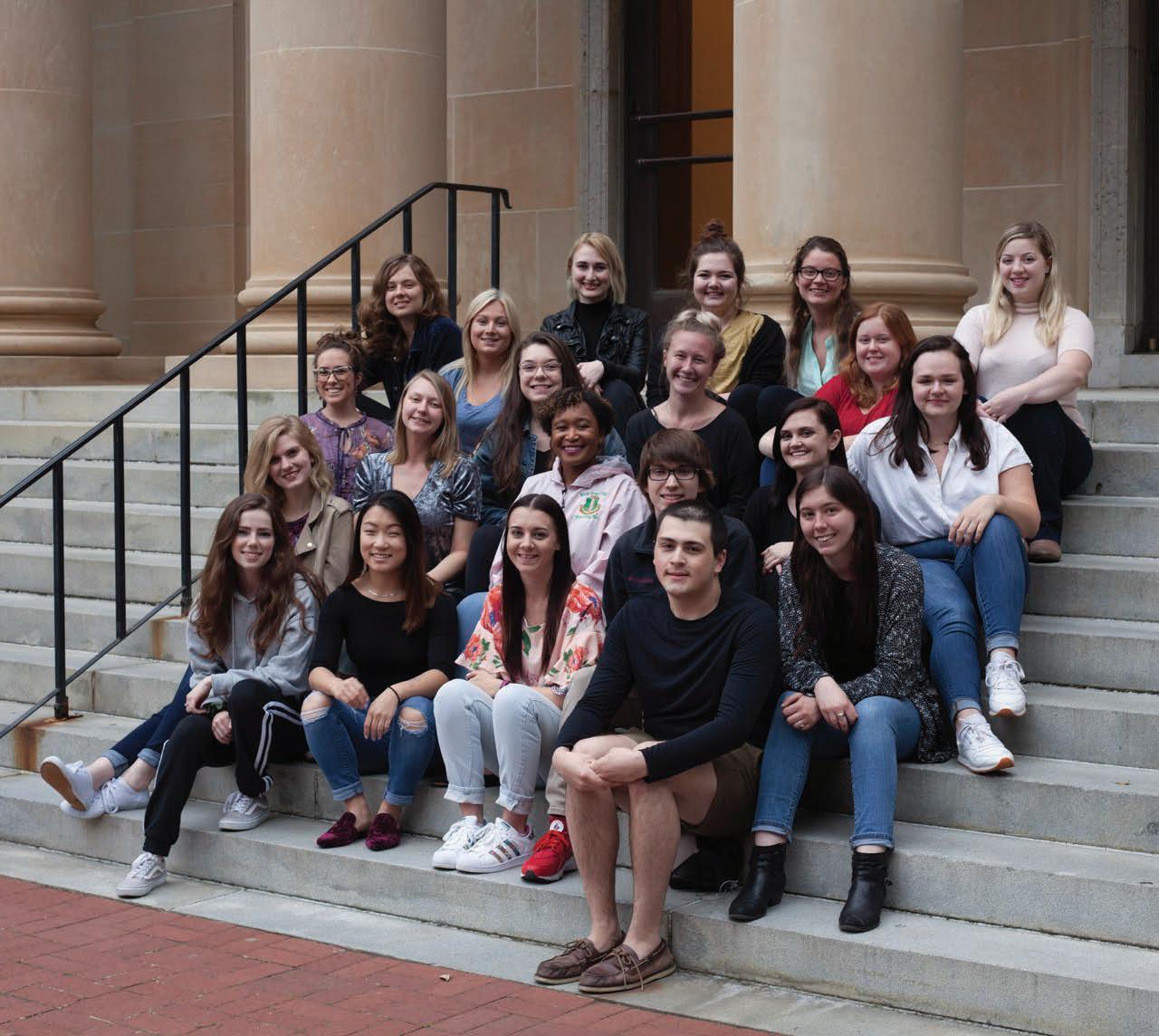
Letter from the Editor
EDITOR-IN-CHIEF BRENNAN BOOKER
It is difficult for me to believe that my time here is almost over. As my year long tenure as editor-in-chief comes to a close, I have struggled to reconcile my emotions attached to this publication. When I began at this magazine what seems like forever ago, I had no idea how this organization would impact my experience at this university. Garnet and Black became a space where I was free to create and surround myself with others who were equally passionate about their work. This quarterly, 56-page publication became a home. It is a place where I was free to discuss the way I saw the world and how I felt about it, and for those opinions to be taken seriously and respected.
Although the journey as editor-in-chief was one of the most difficult things I’ve ever done (you try running a staff of 25 people under the age of 23!) it has by far been one of the most rewarding experiences this university has ever given me. I am so infinitely grateful for the people who saw a light in me at the age of 18, convincing me that this could be a place I would thrive. It is not without the efforts of those who came before me that I would be able to write this letter, or even publish it. This realization was what motivated me through this final issue — realizing that my legacy at this publication didn’t stop when I walked out of my office for the last time, but that it would continue in the impact I would have on the future members of this magazine. Leaving a legacy of hard work, empathy towards the experiences of others, and above all the desire for the truth of the real student experience was what I realized I was brought to this magazine to do. It is with great satisfaction that I can say that I feel as though I have done that.
To the future students who will continue to make beautiful things inside of these pages, I wish you all the best of luck. Though it will never be easy, it will always be worth it. Be proud of the work you create and enjoy it while you can.
I couldn’t finish this letter from the editor without paying my dues. There are so many people I need to thank during this experience. To my creative director Rachel Johnson, thank you for being my balance. You have brought such exquisite taste and leadership to this publication and your visual impact has revolutionized the way this magazine looks. Thank you for giving us an identity and thank you for being a friend.
I would additionally like to thank our readers. The community response to Garnet and Black’s development was something that I had not experienced yet during my time here. To know that we have provided a place where underrepresented people can see people they identify with, and that we have given a platform to those who have remained unheard from for too long is crucial to the future of this magazine, and I am thrilled to see the results.
As always, thank you for reading.
Contents Garnet & Black Magazine Summer 2018 THE FOLLOWING ARE THE CONTRIBUTORS WHO HELPED IN THE PRODUCTION OF THIS ISSUE: HANNAH BAUER, CHRISTIAN HINTY, RYAN HODGE, LARISSA JOHNSON, KEMANI SAUNDERS, ANDREIA WARDLAW AND SAVANNAH WILLIS CORRECTIONS FROM OUR SPRING ISSUE: THE FEATURE “IN THE DARK” WAS WRITTEN BY ZOE NICHOLSON AND PHOTOGRAPHED BY CHRISTIAN HINTY
09 I, SURVIVOR One writer’s struggle to function without a phone. 24 AS HARD AS SHE CAN SC women putting their spin on krumping. 54 THE PROFESSIONAL NETWORK Connect with the corporate drones in your life. TURNING THE PAGE Richland Library makes reading cool again. 10 [[CITATION NEEDED]] Don’t be so quick to condemn Wikipedia. 28 WHILE I HAVE THE FLOOR A discussion between those who protest and those who don’t. 12 THE ELEPHANT IN THE ROOM Are perceptions of the Honors College justified? 32 LIVING HISTORY USC’s Civil Rights Center. 53 EAT & RALLY Elevate your 2 a.m. munchies. 16 CHANGING WINDS Start summer with style. 36 MINDFUL MEDITATION The perfect medicine for stress. 18 INTO THE WARDROBE
C.S. Lewis Center. It’s more than just cats. 44 HOLY GROUND
South Carolina’s beautiful places. 20 THE DIVIDE
48
The
Protecting
Fiction by Larissa Johnson.
COVER PHOTO BY RACHEL JOHNSON STYLING BY CLARA MARZOLF
Programs
Programs
Peer Tutoring Supplemental Instruction Peer Writing & Communications
Peer Tutoring Supplemental Instruction Peer Writing & Communications
Peer Tutoring Supplemental Instruction
Tutors have been trained to guide undergraduates at USC to improve academic habits.
Tutors have been trained to guide undergraduates at USC to improve academic habits. Over 80 courses supported!
Tutors have been trained to guide undergraduates at USC to improve academic habits.
Over 80 courses supported!
Over 80 courses supported!
One-on-one Tutoring
Appointments, Drop-in Tutoring, & Online Tutoring
One-on-one Tutoring Appointments, Drop-in Tutoring, & Online Tutoring
One-on-one Tutoring Appointments, Drop-in Tutoring, & Online Tutoring
Financial Literacy
Student Success Center
Peer Writing & Communications
These are peer-led study sessions for students to enhance their understanding of course material.
Receive tips from SI Leaders who have previously taken the course. No appointment necessary
These are peer-led study sessions for students to enhance their understanding of course material. Receive tips from SI Leaders who have previously taken the course. No appointment necessary
These are peer-led study sessions for students to enhance their understanding of course material. Receive tips from SI Leaders who have previously taken the course. No appointment necessary
Receive assistance during any phase of the writing process to enhance papers or speeches.
Additional support with Lab Reports, Research Papers, Presentations (PPT, Prezi, etc.) Drop-in or schedule an appointment
Financial Literacy SophoMORE Success Transfer Student Success
Maximize your fiscal knowledge through workshops and consultations, such as study abroad funding, debt management, and student loan repayment
Maximize your fiscal knowledge through workshops and consultations, such as study abroad funding, debt management, and student loan repayment
Maximize your fiscal knowledge through workshops and consultations, such as study abroad funding, debt management, and student loan repayment
Receive assistance during any phase of the writing process to enhance papers or speeches. Additional support with Lab Reports, Research Papers, Presentations (PPT, Prezi, etc.) Drop-in or schedule an appointment
Financial Literacy SophoMORE Success Transfer Student Success
Receive assistance during any phase of the writing process to enhance papers or speeches. Additional support with Lab Reports, Research Papers, Presentations (PPT, Prezi, etc.) Drop-in or schedule an appointment
SophoMORE Success Transfer Student Success
Keep the momentum going into your second year with helpful information specific to Sophomores
Keep the momentum going into your second year with helpful information specific to Sophomores
Keep the momentum going into your second year with helpful information specific to Sophomores
Meet one-on-one to discuss your transition and make a plan to find your fit at USC
Meet one-on-one to discuss your transition and make a plan to find your fit at USC
Meet one-on-one to discuss your transition and make a plan to find your fit at USC
Veteran Student Success National Student Exchange Out-to-Lunch
Discuss unique veteran experiences and get connected with campus and community resources
Discuss unique veteran experiences and get connected with campus and community resources
Discuss unique veteran experiences and get connected with campus and community resources
Curious about other cultures or interested in courses that aren’t offered at USC? Consider exchange at one or more of nearly 200 institutions in the U.S., Canada, and U.S. Territories
Veteran Student Success National Student Exchange Out-to-Lunch Study Skills & Workshops
Curious about other cultures or interested in courses that aren’t offered at USC?


Curious about other cultures or interested in courses that aren’t offered at USC? Consider exchange at one or more of nearly 200 institutions in the U.S., Canada, and U.S. Territories
Consider exchange at one or more of nearly 200 institutions in the U.S., Canada, and U.S. Territories
Veteran Student Success National Student Exchange Out-to-Lunch Study Skills & Workshops
Show initiative and gain insight by taking your professor out to lunch in a less formal environment outside of the classroom
Show initiative and gain insight by taking your professor out to lunch in a less formal environment outside of the classroom
We facilitate partnerships between peer leaders and undergraduate students who are committed to developing the tools needed to succeed. Discuss academic strategies with a Peer Success Consultant and co-create a plan to maximize your potential for success.
We facilitate partnerships between peer leaders and undergraduate students who are committed to developing the tools needed to succeed. Discuss academic strategies with a Peer Success Consultant and co-create a plan to maximize your potential for success.
We facilitate partnerships between peer leaders and undergraduate students who are committed to developing the tools needed to succeed. Discuss academic strategies with a Peer Success Consultant and co-create a plan to maximize your potential for success.
Show initiative and gain insight by taking your professor out to lunch in a less formal environment outside of the classroom
Study Skills & Workshops
Student Success Center Success Starts Here
Student Success Center Success Starts Here
Locations
Locations
1. Thomas Cooper Library- Mezzanine
4. Bates House
1. Thomas Cooper Library- Mezzanine
4. Bates House
Locations Programs
1. Thomas Cooper Library- Mezzanine
2. Swearingen Engineering Center
3. Sims at Women’s Quad
4. Bates House
5. Green Quad
6. Columbia Hall
Success Starts Here
I, Survivor
One second I was playing Candy Crush and scanning my boarding pass for my flight back from winter break. Next thing I know, my screen was a pale, dead, glowing white, taunting me while I tried not to cry, desperately trying to buy plane WiFi to send panicked messages to my parents on my laptop.
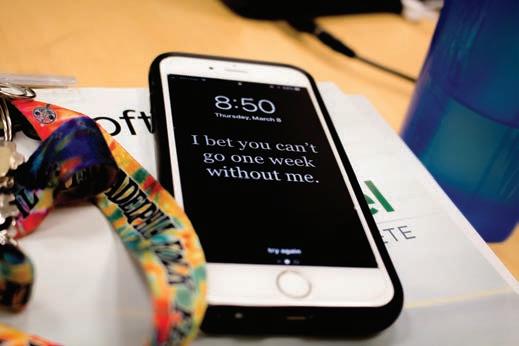

As the guy at the phone repair store later told me, my phone’s Liquid-crystal display (LCD) had cracked. Translation: I was screwed, and just in time for the first week of the new semester. May I just say, being cut off cold turkey from communicating from one’s long distance boyfriend, friends, and family during the craziness of syllabus week is not easy. I was confined to online messengers and reliant on uscstudent WiFi (not the most comforting consolation). Gone was the comfort of listening to music on the way to class. My long walks to and from my volunteering position at Historic Columbia were treks into the unknown—navigating a city I’m not entirely familiar with, sans Google Maps, was like flying blind.
I’m not trying to write one of those think pieces where I moan about how dependent we all are on technology and how we can’t live without it: as an out-of-state student, I love feeling less distant from the people that aren’t here at USC with me, and I love the utility of having any information at the swipe of a screen. Going without a phone didn’t change my life or make me a better person; it made me value the resources I usually take for granted. I can tell you that when I picked my phone up after a week at the repair shop and got to pick up where I had left off on my game of Candy Crush, I almost cried.
CONTRIBUTOR OP-ED 9
A harrowing tale of loss, grief, and a trip to the iPhone Medic. BY HANNAH BAUER • PHOTOS BY EVAN DELP • DESIGN BY ANGEL PRATER
Turning the Page
Enjoy a book, food, and coffee at Richland Library’s new community hub.
BY COURTNEY CARRICK • PHOTO BY ROBERT CARTER • DESIGN BY ASHLYN MURPHY
WHEN PEOPLE THINK OF A LIBRARY, the image often evoked is not a positive one. For most, the word “library” is a synonym for dusty shelves, pissed librarians, and stuffy corners where the computers don’t ever quite work right. However, libraries across America—including our own Richland Library—are actively flipping the script by redefining what it means to not only be a library, but a community hub and one of the last free public spaces for many to enjoy.
Historically, libraries have been intended as storage space for books, and little more. No longer is this the case, as anyone who has visited Richland Library themselves can attest to. Libraries like our own now offer free art showcases, documentary screenings, and classes ranging from computer applications to resume building. Unique and new sections such as the extensive manga collection encourage inclusion of newly recognized subsets of both visual art and creative writing. Those interested in the more visual side of art can enjoy the graphic novels or a plethora of DVDs. However, Richland Library isn’t just changing what a library offers physically, but visually as well.
It is hard to believe the Richland Library is even a library at first glance, with its modern interior being just as aesthetically rich as its exterior. Large windows and open areas allow light to travel to seemingly every corner, and employees are happy to help you find a comfortable couch or individual area for you to do whatever it is you
want to do: read that book, watch that movie, sip on that smoothie from the new café (yes, a library with a café). Local artists’ work can be found in the open spaces of the library, kids of all ages eagerly swarm the 20,000 square foot Children’s Room, and college kids and homeless folks can both be found attending the same showcase.
The building is truly a place where all of Columbia is welcome to engage, which is precisely why is so important about spaces such as these. Most public spaces don’t cater to all of the public, as they aren’t completely free to enter. Public spaces such as stores or restaurants require a purchase or a met standard of dress in order for an individual to occupy a public space for a given period of time before considered to be loitering. Due to this being the case, the only remaining public spaces that are truly free are places like public parks, which unfortunately are outside and expose those in these areas to the elements. Some people depend on using public spaces in order to get through their day—whether it be a student who has to kill a few hours every day between attending class and going to their evening job or a homeless woman who stays at the shelter at night. It is imperative that free public spaces, such as the library, are supported by the community around them. Libraries are evolving the improve the lives of those that visit them, and to protect the lives of those that need them.
10 COMMUNITY

11
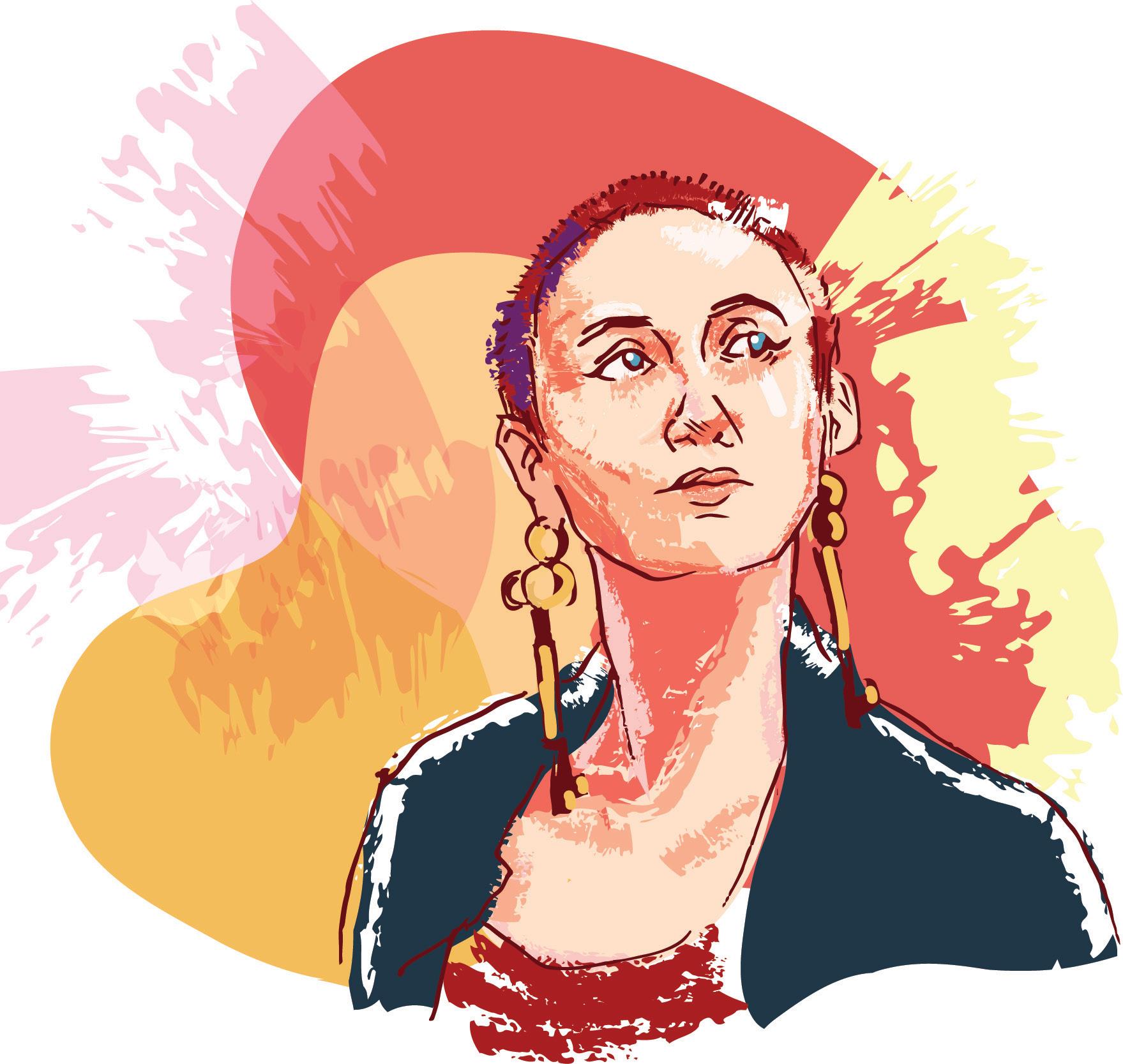
12 WHILE I HAVE THE FLOOR
WHILE I HAVE THE FLOOR
Today, politics seems to be at the topic of every headline, dinner conservation, and tweet. In the final installment of While I Have the Floor, two USC students who sit on opposite ends of the political spectrum—no, not Republicans and Democrats— discuss political participation. Miles Joyner, a politically active student and LGBTQ+ advocate, and Payne Skersick, an informed yet politically inactive student, discussed their motivations for their respective levels of political activism.
BY ZOE NICHOLSON • ILLUSTRATION BY WANDA FELSENHARDT • DESIGN BY GRACE STEPTOE
What is your level of political involvement?
JOYNER: I consider myself an advocate and an educator, which basically means I provide people with information that they need to be more knowledgeable on about the issues that are happening right now and the issues that are affecting us. I also will do my part in reaching out to my legislators, encouraging others to reach out to their legislators through text, calling them, emailing, showing up to their offices, and harassing them in the most legal ways possible.
SKERSICK: My political involvement extends to just pretty much taking in as much information as I possibly can and forming my own opinions, but I don’t really act upon them like [Joyner] would. I listen, I watch, I form my own opinions. To be politically active, it takes a lot of energy, and I get drained really easily. Really, just reading about politics I will get emotionally drained. I get that, like, it affects everyone, but it’s just sometimes things aren’t just for certain people.
Do you think the current climate has created a pressure to be politically involved?
JOYNER: There is a pressure. A lot of the communities that I’m involved in, we see the ability to step away from social issues as a kind of privilege a person can have. So, I can never stop experiencing politics as an LGBTQ person. I am constantly in politics because I have to be, and because not everybody in my community has a voice that they can share to they way that I can. Whereas somebody that doesn’t identify as LGBTQ, they can just kind of look at what’s happening and be like, ‘that’s bad,’ and then still kind of remove themselves from that situation—it’s not going to immediately impact their life.
SKERSICK: I am also part of the LGBTQ community. But I get it, and a lot of it really sucks because those are affecting my people
13
and everything. Georgia just passed a bill [banning LGBTQ couples from adoption], but if it was me I’d just be like, ‘alright I’m just not going to live in Georgia.” I guess my approach to that is that if I don’t like it I’m just going to avoid it. I guess that’s a bad mindset, but it’s what works for me, and it separates it out of my life so I don’t have to deal with it.
Did your household growing up influence your views on politics and political participation today?
SKERSICK: Home affects a lot of people’s political opinions because when you’re growing up, the opinions you most respect are your parents’ opinions. So typically, a lot of people kind of form their own political opinions based off of what their parents do. But I think my parents are fairly conservative, and I’m not conservative.
JOYNER: I also grew up in a rather conservative home, which I feel like is the story for the South. I always wanted to make my parents proud and everything, but I can never say with assurance that I’ve ever shared their political views at any point in my life. The second that I kind of became aware of how the world works, I started shifting.
SKERSICK: Another thing with my household—I’m pretty sure I’m the only one in my household that’s not conservative. I remember, I think it was Christmas break, we all took like a hot minute to question things that were going on in politics and with each other— we were getting each other’s opinions. So we were having an open minded discussion to try and understand how other people viewed this major issue.
JOYNER: A lot of family holiday events turn into “I thought we weren’t going to talk about politics.”
SKERSICK: We were drunk, but it was surprisingly mellow.
Has college shifted those gears?
JOYNER: College didn’t really impact my political views that much. If anything, it
just made my already strong convictions stronger. I still go home to seeing “Fox and Friends” on every night and just kind of groaning and leaving the room. It’s nice to be able to leave the “Fox and Friends” household every now and then and come to campus and have consciousness raising events with people that think like me, but a little differently. Use the building blocks that I have on my own and the passions that my parents kind of helped grow within me to build this new idea of self.
SKERSICK: I think college definitely helps because you’re surrounded by people who are educated and people who are open-minded. You’re surrounded by so many different ethnicities, backgrounds, and religions that you’re just kind of like open minded to it and you’re numb to the diversity, so you just see someone as a person.
Do you vote?
JOYNER: Oh, hell yeah.
SKERSICK: [Nods.]
What are your thoughts on ‘every vote matters’?
JOYNER: It matters contextually. I’m not going to sit here and say that gerrymandering does not exist and that your vote is not essentially going to get thrown in the trash because of the district that you live in. But what’s happening in a lot of these heavily Red states over the last year is that they’re being flipped to Blue. People are voting, their minds are being changed. I do think that young people need to vote more, but I’m not going to act like somebody is wrong for having their opinion that their vote doesn’t count. And that by not voting and not taking part in this system, they are protesting.
SKERSICK: I agree, I think it’s up to everyone’s opinion on whether they feel like they should vote or not. Something I recently realized is that the more you talk to people, the more you hear people say ‘Oh, I’m not voting because blah, blah, blah… my vote doesn’t matter,’ there’s going to be a number of people, quite a number of people, across the country that will also say their vote doesn’t matter. If all those people actually did vote that would make an impact.
Has the past election cycle affected your viewpoints?
SKERSICK: The past two years have really helped me filter out my Facebook friends, because Facebook is just a political war ground. Facebook, Twitter, those aren’t places I want to see people’s politics. If you want to talk about politics, discuss it in person, but I go on twitter to look at pictures of dogs and memes. It’s an escape from reality.
JOYNER: Well, I’m in the opposite situation because a lot of my activism is social media-based. So, I can’t afford not be always front-facing when considering the wonderful journey that is Fox News and the recent political climate.
Have your stances caused issues with friends and family?
SKERSICK: I mean some people accuse me of not being active, but it’s my life, I can live it however I want. It doesn’t really affect me, I’m kind of apathetic to things that people contradict me to, but this recent political atmosphere has definitely made me pay more attention to it. But like I said before, I take a step back from it because it’s just a lot to take in.
JOYNER: I screen Facebook a lot. The second that I see somebody say something on my Facebook feed that I don’t have the energy for, I make a tick mark, and once they’ve hit like three ticks I either unfollow or just get rid of them. But that’s because it’s Facebook, it doesn’t actually matter. As far as my home dynamic, honestly my recent activism—while it’s made things tense during political discussions—it’s also educated my family a little bit more because they see that this is something I’m passionate about, so they’ve stepped out of their box.
14
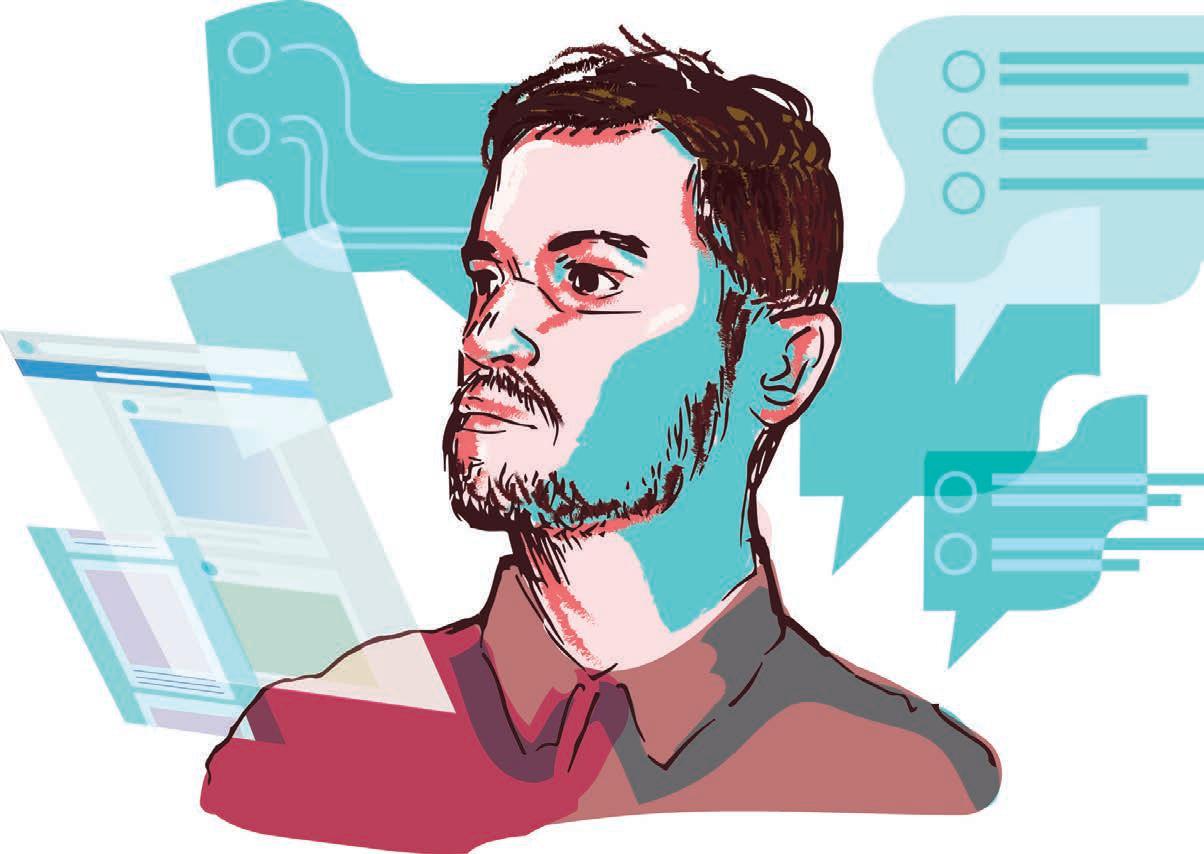
15
EAT & RALLY
THE BEST BAR FOOD IN COLUMBIA.
LET’S GET SOMETHING STRAIGHT: Pita Pit is not a viable “drunk food” option. If the meal is something you would order two lunches in a row without an ounce of remorse, it does not suit the glorious carb and cheese covered category that satisfies an alcohol filled stomach. Some of you may have the right idea. “Ah, yes,” you say, “She’s talking about the borderline state fair options available in Columbia around 1:30 in the morning.”
Indeed, I am.
No matter your location in Columbia, there is a winner in this unofficial cheesiest snack competition for your neighborhood.
NIGHTCAPS Four words; hand breaded mozzarella sticks. For those willing to make the trek down Divine Street, the reward of Mozzarella sticks made from scratch awaits in this classic and friendly neighborhood bar. Accompanying the arguably best drunk food in Columbia is their famous Styrofoam-clad White Russian. Not a cheese stick fan? Their quesadilla and fully loaded cheese fries will not disappoint.
THE WHIG
Speaking of cheese fries, I would be wrong to not talk about the best ones in late night Columbia. Located in the Main Street District, The Whig offers fully loaded homemade fries with the perfect amount of cheese distributed throughout the dish (not simply piled on top, leaving cheeseless fries underneath). Upon locating this unique underground venue across from the SC State House, gouda mac and cheese, pizza, grilled cheeses and neato vibes await you.
BAR NONE The options I’ve listed thus far are rock solid, but maybe you don’t have time to venture out of Five Points. Maybe you need to #treatyoself right now. Residing near the corner of Blossom and Harden Street, Bar None allows just that. This wildly underrated spot specializes in a wide variety of sharable snacks. Fried mushrooms, fried pickles, cheese fries, wings, personalized ceiling tiles and killer customer service are among the bragging points here.
No matter the evening’s agenda, these three locations and their friendly faces behind the bar are ready to “Fieri up” these dishes well past traditional operational hours. Remember: when in doubt, Nightcaps’ mozzarella-stick it out.
BY SAVANNAH WILLIS
PHOTO BY BRENNAN BOOKER • DESIGN BY RACHEL JOHNSON
16 FOOD
•

17
MINDFUL MEDITATION
An alternative approach to stress management.

18 HEALTH & WELLNESS
BY LEXI HILL • PHOTO BY EVAN DELP • DESIGN BY RACHEL JOHNSON
According to the American College Health Association spring 2017 data report, one in five college students has either anxiety or depression. If we were to apply that statistic to the undergraduate students on the main Columbia campus, about 6,800 students are potentially affected.
The study also found that 24.5 percent of students were taking prescribed medication to alleviate the side effects. What about the other 75.5 percent of students, though? How are they managing their stress?
The truth of the matter is, anxiety presents itself in different ways. Oftentimes, anxiety manifests in an obsessive way, with ruminating thoughts, hyper-vigilance and irritability. Other times, people with anxiety experience fear, insomnia, palpitations and poor concentration. For that reason, it can be hard for students to figure out if they have anxiety or are just experiencing high levels of stress.
As a result, some self-cope or don’t cope at all, leaving them in a more complicated situation than before. However, managing stress doesn’t have to seem impossible. For most, implementing self-care and mindful meditation makes a world of difference. Here are two holistic options to consider that you can start at home or even right on campus.
EMULATING BUDDHA
Focusing on the idea of happiness, Buddha teaches that in order to achieve a content state of mind, you must find inner peace.
“We all have a natural source of inner peace in our spiritual heart,” said Kelsang Jangchen, a Buddhist nun who teaches locally at Meditation in South Carolina. It’s when that natural source of happiness is obscured by anger, stress or worry, that people are enveloped in negativity. “Through Buddhist meditation, we learn to stop identifying with these negative states of mind, and gradually to reduce and eventually eradicate these negative minds completely,” said Jangchen.
In order to accomplish this, Jangchen recommends watching your mind throughout the day, and working to identify any negative thoughts that come to mind. “This takes practice,” said Jangchen. However, with help from a teacher, or even from a class, it’s possible. “Through learning to identify and experience our own ability to quiet our mind
and connect to an inner source of peace, we stop mindlessly reacting and instead gain more control over our ability to keep a positive and happy mind no matter what’s happening in our life,” said Jangchen. It’s recommended that you take 10 minutes out of your day to check in with yourself, quiet your mind and focus on your inner peace.
UTILIZING CAMPUS RESOURCES
Finding help doesn’t have to mean looking outside of campus. In fact, there are tons of ways you can alleviate your stress or manage your anxiety right on campus. You can stop by Student Health Services C.A.L.M Oasis, Midday Meditation or Stress Management Consultations.
At C.A.L.M., students are able to practice meditation and mindfulness in a calm environment right on campus. In fact, all are welcome when classes aren’t in session to use the space to meditate, reflect, practice Yoga or engage in any other meditative experience. “It is definitely a place to unplug,” said Marguerite O’Brien, Director of Wellness, Prevention & Advocacy at Student Health Services.”
If you’d rather attend a class, Midday Meditation offers a 20 minute guided meditation with a trained staff member. This is a good option if you’re feeling stressed before an exam, or need to unwind before the weekend.
If you’d rather speak to a professional about your anxiety or stress, the Health Center also offers Stress Management Consultations which help to manage the day-to-day stresses. “We encourage students to come early in the semester, before they are feeling like their stress is overwhelming and impacting their daily functioning,” said Justina Siuba, the Program Coordinator for Stress Management.
There are a lot of ways to monitor your stress and anxiety on campus and locally. Anxiety and stress are among the top two concerns for college students, so you’re not alone in your feelings. There’s always someone who can help or even just listen. Next time your stressors get the best of you, remember to take a deep breathe, check in with yourself and find a quiet space. Your body and mind will both thank you for it.
19
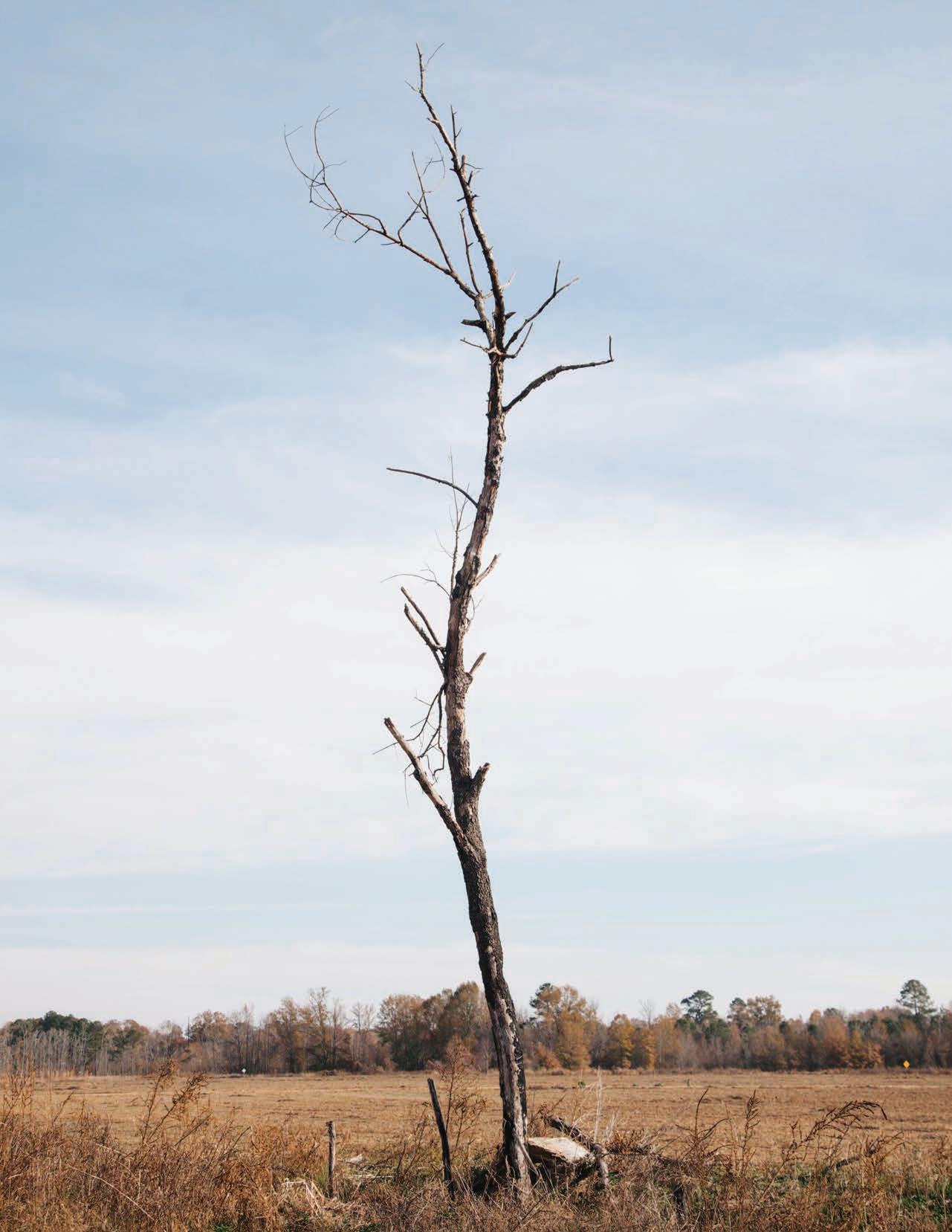
HOW THE CONSERVATION BANK IS SAVING SOUTH CAROLINA,
GROUND HOLY
BY ZOE NICHOLSON
PHOTOS BY BRENNAN BOOKER DESIGN BY RACHEL JOHNSON
FEATURE 21
ACRE BY ACRE.
THE CONSTANT SOUND OF THE WAVES ON THE SHORE. THE SPONGY SMELL OF THE MARSH. THE TECHNICOLOR SUNSETS FROM HORIZON GARAGE. THE HEAVY HUMIDITY OF A LAZY JUNE MORNING. UNDERNEATH THE SCANDAL, STEREOTYPES, AND PRECONCEIVED NOTIONS OF SOUTH CAROLINA LAYS A BURIED TREASURE: THE LANDSCAPE. DOTTED ACROSS THE STATE, MOUNTAINS, MARSHES, RIVERS, AND COASTLINE DEFINE THE LAND WE LIVE ON, AND THE PEOPLE TOO.
“You take away the iconic landscapes and what do you have left?” English professor Dr. Paula Feldman asked, “New Jersey?”
Since 2002, the Conservation Bank of South Carolina has been working to preserve these landscapes throughout the state. Started as a “grass roots effort” to determine how to best save our wilds, the movement became a bill, and the bill was ratified, forming the bank as a state agency. Since, thousands of acres of public and private lands have been protected through funding given by the bank.
While the bank seeks to protect public lands, such as Angel Oak Park in Charleston or the Swamp Rabbit Trail in Greenville County, it mainly gives through conservation easements—or a legal way to protect a private citizen’s land through a grant process.

“It gives the landowner a benefit and incentive to conserve and protect their land from further development,” Rebecca Haynes, the Deputy Director of the Conservation Voters of South Carolina, said. Those incentives include tax breaks, which lessen the financial burden of a large property on landowners and ensures they won’t have to sell off to developers.
Haynes gives this hypothetical to explain the case for conservation: "If I’m a farmer with 100 acres of undeveloped land, I can farm the five acres I am capable of managing and protect the remaining 95 through an easement, thus ensuring my family land won’t be poached for a subdivision in the future. In short, the Conservation Bank makes sure the South Carolina landscape doesn’t become clogged with Golden Arches and apartment complexes."
The bank creates permanent solutions for residents’ futures, but its past hasn’t been so certain. Since its inception, the bank has been operating on a ‘sunset’ clause—meaning the bank’s enabling legislation has to be reapproved at the Statehouse. The bank is set to expire on June 30 of this year, but a group of environmental nonprofits and land trusts,
22
including the Conservation Voters of SC, is working to pass a new version of the bill to keep it functioning. Unfortunately, nothing is ever easy at the Statehouse.
“There are some legislators that questioned how the Conservation Bank was awarding the dollars because it is a very competitive grant process… they had questions on how the board was choosing those people,” Haynes explained.
According to the Post and Courier, these questions, brought up last year over how the bank’s funds were being used, almost led to a complete defunding of the bank by the Legislature. Governor McMaster vetoed this bill, but ordered an audit into the bank’s financial handling.
While there was no evidence of fraud found, the audit did find the bank to have “poor money management” practices, prompting new officers to be appointed and a follow-up investigation from the Legislature in February. Although the investigations raised many eyebrows, they didn’t impede the bank’s chances of renewal.
When H.4727, the bill to renew the bank and expunge the sunset clause from the enabling legislation, was introduced into the House in late January, it passed—but with some major changes.
In addition to the changing the way board members are chosen and approved (which was partly a result of the audits into the bank), the way the bank receives funding was also affected. Historically, the Conservation Bank received some of its funding through the Deed Stamp Recording Fee, setting it apart from most state agencies, which are funded as line-items in the general funding budget, Haynes explained. The version of the bill that passed in the House, and is currently making its way through the Senate, eliminates that source of funding.
Will this reduce the funding? "No," said Haynes, “it just changes it.” Even with the investigations and funding changes, H.4727 passed unanimously in the House.
“Historically, both Republicans and Democrats have supported the Conservation Bank because it is an innovative way to voluntarily protect land for conservation,” Haynes said. “It is the envy of other states.”
It may seem odd for a deeply conservative state to put more emphasis on environment than enterprise, and Feldman said we have Florida to thank for that: “South Carolinians were actually fortunate that the state was so poor after the Civil War. When people started to discover the South in the 1950s… they went as far south as they could go. They went to Florida.” She claims tourists just saw “a bunch of swamps” when passing through the Palmetto State, and thought it unsuitable for vacationing.
The tourists saw the natural beauty of Florida and bought it up for development,
building beachfront homes and resorts that destroyed the protective wetlands and dunes of the coastline, as well as “depleting the aquifers,” Feldman said.
By the time the tourists turned their eyes and wallets to South Carolina, we had the Florida example to heed. “We're just lucky that we were so backwards for once,” Feldman said. “Our slowness was a blessing.”
When South Carolinians saw the work that had to be done to protect the landscape from development, the work was anything but slow—especially once the tourism giants in Myrtle Beach and Charleston got involved.
“We have one of the most enlightened beachfront management acts in the country,” Feldman said. “…that was designed 2025 years ago. It was before anyone was talking about global warming or flooding, but people realized that with erosion you have to do special things to protect marine environments.”
Tourism is a $21.2 billion industry in South Carolina, making it the most profitable, and the most powerful. “It doesn't make any sense not to invest in the environment,” Feldman reiterated—if we lose the views, we lose the tourists.
The environmental protections offered to South Carolinians may be in place for capitalistic reasons—but sometimes intention is irrelevant when the result is almost
300-thousand acres of protected lands and coastline and a surprisingly progressive stance on conservation from a conservative government.
“Everybody benefits. It doesn't matter whether you're rich or poor, it's a beautiful environment that's being protected [and] you benefit,” Feldman said. But where one may see protected wetlands as progress, others see it as a hindrance.

In an op-ed to The State, Rep. Tom Rice wrote about how “a group of obstructionists who like to call themselves environmentalists,” aka the powerful land trust the Coastal Conservation League, are halting the proposed expansion of Interstate 73. Rice claims the lawsuit the League is bringing on will keep rural South Carolinians from jobs and tourist traffic, and lessen travel time to the Grand Strand. But residents claim that isn’t the case: tourists will never stop for a scenic tour of Dillon County, Interstate or no.
If the House’s version of the Conservation Bank’s bill passes in the Senate, then the bank will become a permanent state agency, Haynes said, ensuring the continued preservation of the places that make South Carolinians who we are.
The land is our heritage, from the coastline to the Blue Ridge mountains. Smiling faces, beautiful places—it isn’t just a pretty saying, it’s cause-and-effect.
23
BY SARAH NICHOLS PHOTOS BY BRENNAN BOOKER AND KEMANI SAUNDERS DESIGN BY ANGEL PRATER
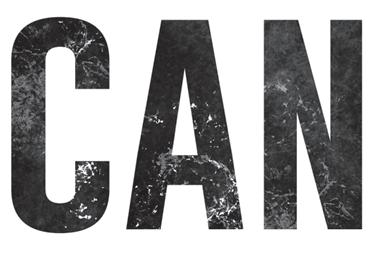

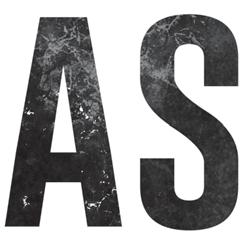
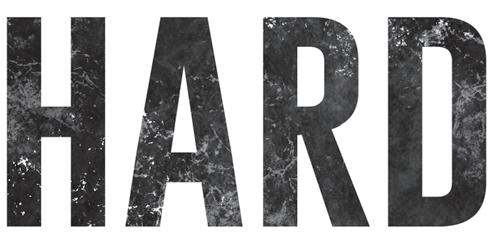
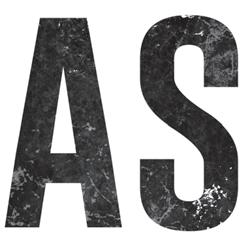

24

FEATURE 25
WOMEN IN KRUMP PUSH THE LIMITS.
EVERYONE HAS CLUMPED TOGETHER TO FORM A TIGHTKNIT CIRCLE. THE MUSIC IS BLARING; YOU CAN FEEL THE BASS THUMPING IN YOUR CHEST, A RHYTHM FASTER THAN YOUR HEARTBEAT. YOUR MOVEMENTS ARE STRONG AND SHARP. EACH BODY PART GETS ITS OWN MOMENT IN THE SPOTLIGHT AS YOU ISOLATE, POP AND HIT. SHOUTS OF ENCOURAGEMENT AND EXCITEMENT COME FROM ALL AREAS OF THE CIRCLE AS YOU PUT YOUR PASSION OUT THERE FOR EVERYONE TO SEE.
This is the world of krump, an energetic and powerful dance form that is growing in popularity and numbers every day. It started on the streets as a way to express excitement, anger and passion, and it has continued evolving into a network of dancers who continue to shape and change this art. Relatively new to the dance world, krump has been around for about 15-20 years, and in that time, it has made its way to all corners of the world: from Korea and Cuba to our own home in South Carolina.
“Krump is not angry; it’s expressive,” said Davon Bush, leader of the Lionheart krump group. “A lot of people think that. It’s expressive, powerful, full of energy, and it’s passionate. That’s the best way I can describe krump. In its primitive years it didn’t really have a lot of form or technique to it, and now, in its evolution, it has so many other dance styles
that you incorporate into it. It’s an array of color.”
Krump started as a dance form on the streets in the early 2000s. It caught on a few years later in South Carolina when a bunch of people saw Rise, a documentary about krump.
It was me, a dude named Thomas Kelsey, and [Davon’s] brother, actually, Brandon Bush. Thomas Kelsey got in contact with some people in North Carolina that actually had roots and ties with people from California, and we started dancing with them a lot,” said Maurice Blakely, one of the original South Carolina krumpers. “After that, we formed a group called SNC: Supernatural Creations. From there, we started traveling to North Carolina doing battles, and then we had our first big event [in South Carolina], called Rumble City… And that started the first actual big push for South Carolina to be put on as far as being seen by other states.”
And in the state of South Carolina, as krump has expanded and evolved, there are only two fierce women who have taken on the craft of krump: Kelsey Edwards and Leeah’ Garrett. Krump is generally seen as a masculine style, as it is sharp and hard-hitting, and it negates the graceful nature and fluidity of traditional feminine dance styles, such as ballet or contemporary.
Kelsey, a South Carolina native, has been dancing since three years old. Her dance background came from a wide variety of different influences; she was self-taught, she danced in public school dance teams and she gained a liturgical dancing background in her church. After graduating high school, she moved to Greensboro, North Carolina to go to North Carolina Agricultural and Technical State University (A&T), where she practiced and performed with a group called Couture Productions.
I was so embedded in dance in North Carolina it was crazy. It was like I was drowning in it, and I loved it so much,” Edwards said.
It wasn’t until she moved to Columbia for a job opportunity that she started truly immersing herself in the world of krump, though.
“But I always did my street stuff on the side. I always made sure I lived that part too, as well,” Edwards said. “Mind you, this is the plot twist: while all of this was going on in my life, the krump scene was here the whole time and I did not know. It was here, while I was growing up, and I had no clue about it. So it just stunned me when I was at A&T and I would come down [to Columbia] to visit, because I knew some people here...that’s when they started telling me all of this history that was happening here, that was connected to the stuff where I was in North Carolina.”
Edwards has been training intensively in krump for about a year now. She is a part of the Lionheart fam, led by Davon Bush. She describes the dynamic of the 6 to 7-member group to be much like you would think of a dance crew, but much closer.
I’m Lady Lionheart, and then there’s Leeah’, who’s Girl Lionheart, and we’re literally the only two girls in the krump game in South Carolina right now, and that’s just really crazy. We’re trying to get more women involved, you know,” Edwards said.
Leeah’ Garrett started krumping through Bush as well, a long-time friend of hers. She saw what he was up to on Facebook and went from there.
I just was interested because I was tired of doing the girly stuff—that’s what I call it—such as contemporary, jazz, ballet and stuff, because I’ve always done that. I’ve been dancing for about 7 years, doing all that stuff. So when [Bush] told me about it, I kind of fell in love with it as he kept teaching me,” Garrett said. “When I was being taught, it was hard for me because it was showing lots of powerful movements when, you know, you do the girly stuff, you should be graceful and have light movements. But with krump, you’re planted on the ground and you’re trying to make a sentence with just different parts of your body.”
Garrett was the only woman in South Carolina training intensively in krump for about a year until Kelsey came on board.
It’s more of a manly dance, so when women try to express themselves, a lot of people kind of judge to see how we express ourselves in this type of dance,” Garrett said.
26
“But being the only girl is kind of fun because we get to show different aspects of how we can actually do the same things as men can, just in a girl way…Once Kelsey joined, I kind of felt better and kind of felt more support, and we just support each other in the whole thing.”
Edwards says she enjoys being able to push the boundaries of what the audience expects of her.
“I’ve always liked to do more masculine dances because it’s just a nice switch-up. It’s nice because you’ll never know what to expect out of me, you know?” Edwards said. “Because I have a lot of different styles that are embedded into me, so you don’t know where I’m gonna go. And that element of surprise is something I really love.”
In April, Edwards and Garrett will be traveling to Texas for a women’s gauntlet in krump with 18 other girls. The event is a part of a convention called The Resurrection, and it’s one of the biggest krump conventions in the United States. And although there may only be two women so far doing krump in South Carolina, they’re putting their talents out there for everyone to see. Perhaps the day where there are more women krumpers isn’t too far in the future. A few weeks ago, in a free krump dance class that they opened to the public, the room was filled with a crowd of women—moms, students, dancers and more. And with the encouragement and inspiration that Edwards and Garrett bring to aspiring dancers in South Carolina, I wouldn’t be surprised to see the numbers grow.
You don’t see a lot of girls that hit as hard as they should like that, so I always try to inspire to pretty much show guys, I can really do this too. You know?” Edwards said. “It doesn’t have to be just guys all the time to throw something powerful; sometimes it takes that female to really tear something down. The freedom of that to me is really addictive.”
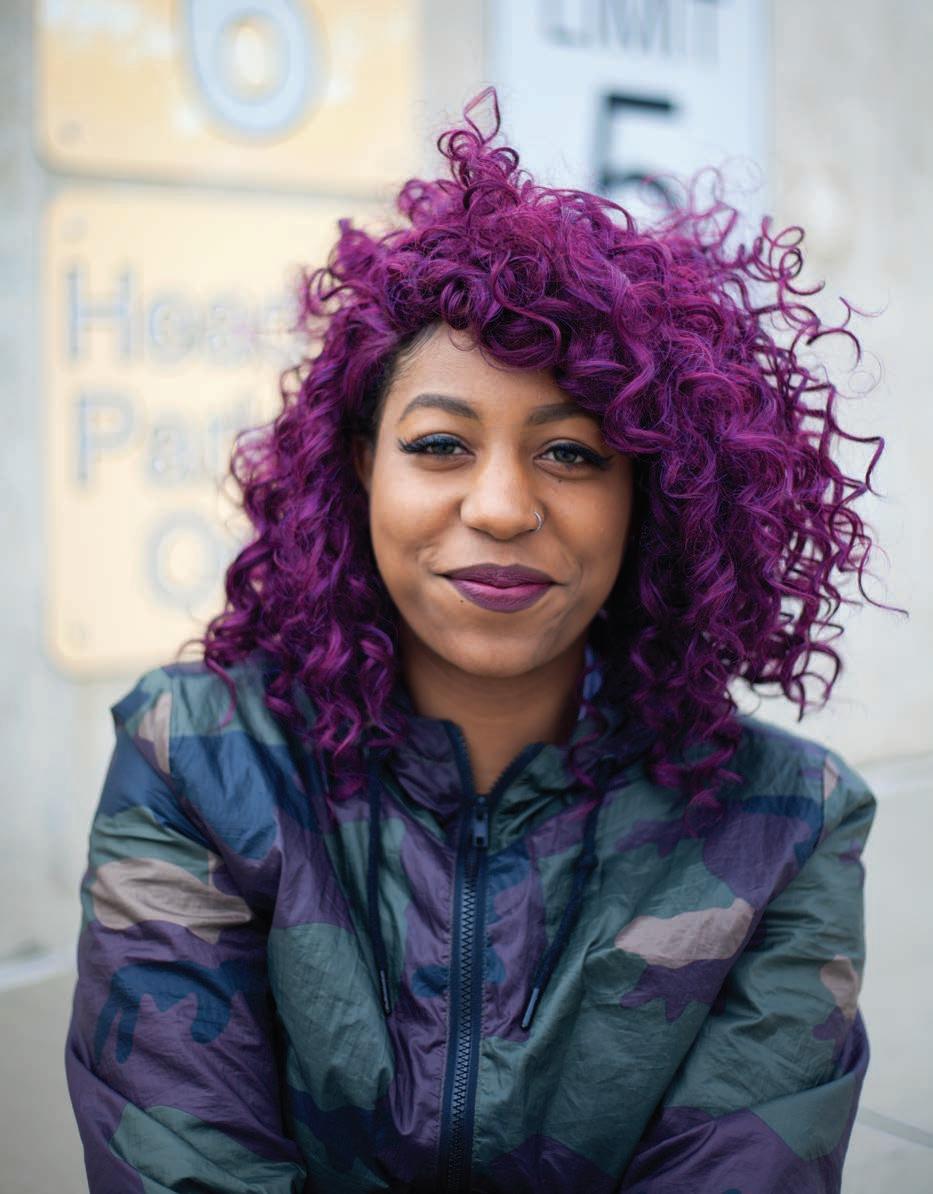
27
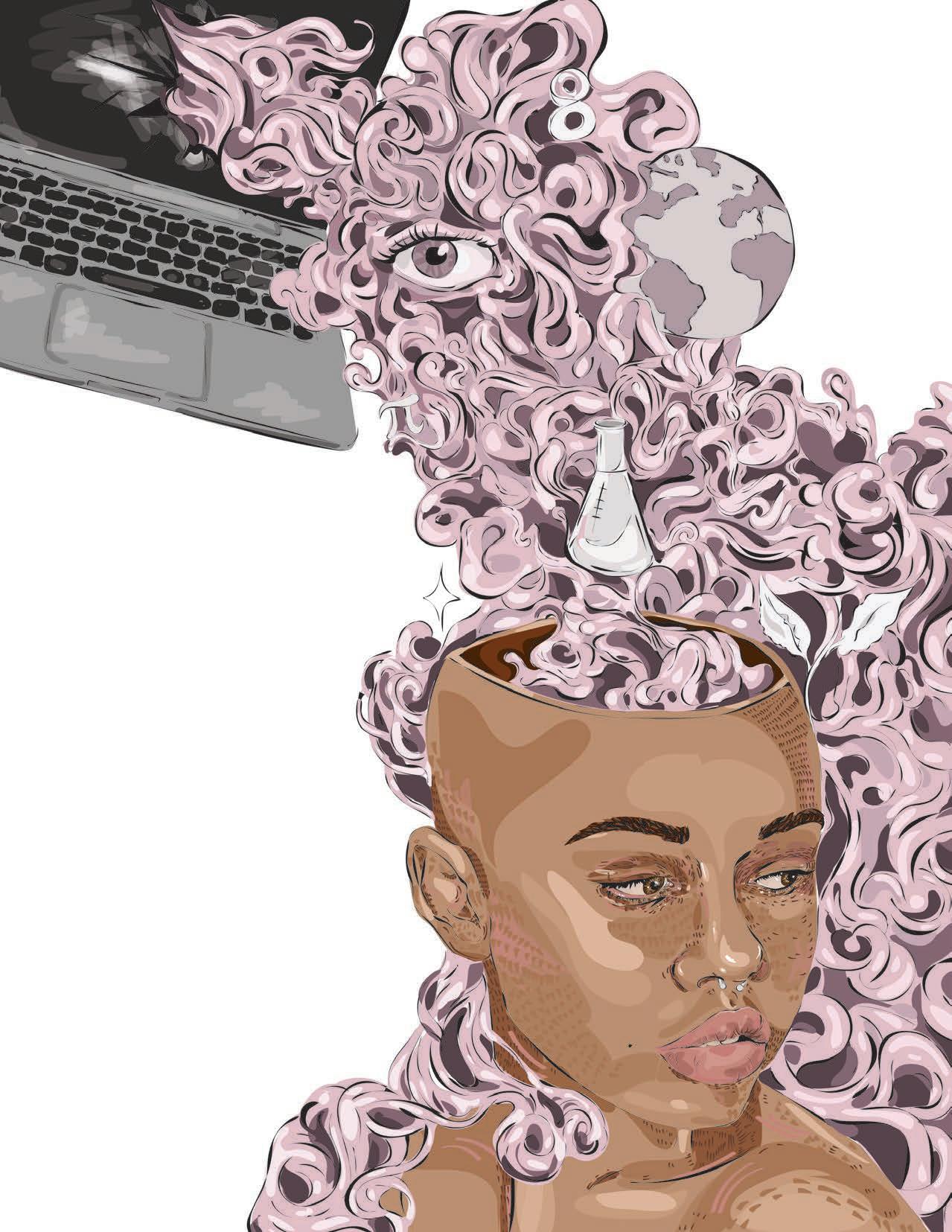
28
The case for Wikipedia as an academic source.
BY CHRISTIAN COMPTON • ILLUSTRATION & DESIGN BY GRACIE NEWTON

FEATURE 29 [[
CITATION NEEDED ]]
“IMAGINE A WORLD IN WHICH every single person on the planet is given free access to the sum of all human knowledge. That’s what we’re doing,” founder of Wikipedia Jimmy Wales said in 2004, just shortly after the online encyclopedia reached over one million articles.
The goal, most would agree, is noble, but how has Wikipedia shaped up to Wales’ vision, particularly in the sphere of academia? As of late 2017, it is the world’s fifth most commonly visited website worldwide, drawing in around 495 million unique readers per month. The caveat, however, that has prevented it from being accepted in academia, is that it grants the power to anyone on the internet to edit its articles.
Indeed, any person with internet access can log on to a Wikipedia article and begin making edits – at least that’s the notion many have. This, however, is only part of the bigger picture. While most pages on Wikipedia are, indeed, subject to edits from any internet user, thousands of pages covering the most popular of topics are protected or semi-protected, meaning that one must have an account registered to make edits. In addition, edits to these pages are usually subject to intense scrutiny from editors devoted to preventing vandalism.
The common attack on Wikipedia’s reliability stems from this. After all, if anyone can make edits to the pages, how can you know that someone didn’t simply enter false information on any given page?
There are several angles to counter this concern from. Protected articles are one way to cut down on these concerns, but it doesn’t eliminate the possibility that information on a page may be false. Numerous informal tests have been performed by a variety of publications where writers inject false information into articles to seeing how quickly they are reverted. In most cases, vandalistic edits were undone within minutes.
Within Wikipedia is a little-known, oftenoverlooked network of pages loosely governing the website, developed by several editors over
the course of the encyclopedia’s existence, known as articles in the Wikipedia Namespace. These pages, which are always titled as Wikipedia:PageName, provide insight into the rigor that goes into validating information on a wide variety of subjects. Reading into some of these pages reveals an interesting truth about Wikipedia that is conveniently omitted by its critics: the standard of accepting information is often just as rigorous as print encyclopedias – a point that has in the past been disputed by encyclopedias such as Encyclopaedia Britannica. Nevertheless, these guidelines are consistently enforced by several volunteer editors and a few administrators. Thus, a common argument within the community of Wikipedia editors is that the website “works by consensus.”
Editors responsible for creating pages are often quick to revert unverified additions of information, with IBM researchers finding in a 2003 study that “vandalism is usually repaired extremely quickly—so quickly that most users will never see its effects.” Nevertheless, due to the massive amounts of edits made to Wikipedia every day, checking every edit to ensure it complies with these guidelines is impossible. Vandalism and misinformation have been known to slip through.
During the 2008 presidential election for example, The New York Times exposed a series of roughly 30 edits made to the Wikipedia page on Sarah Palin just a day before she was announced as John McCain’s running mate. The edits, which consisted mostly of statements of praise for Palin, were revealed to have been made by a staffer on McCain’s campaign.
Nonetheless, the evidence seems to favor Wikipedia as a trustworthy source on a variety of topics, particularly articles that are wellreferenced. Still, that doesn’t mean you should try citing it on your papers, with Wales himself saying in 2005 that encyclopedias are not intended to be primary sources. “In most cases, students should use Wikipedia as an entry to a topic, but serious academic work usually
30
requires digging deeper,” said Michael Gavin, an English professor here at USC. “This means following up on the sources cited in Wikipedia, reading them closely, and thinking hard about the research questions.” Gavin noted as a disclaimer that students should, of course, always direct questions about sourcing to their instructors.
History PhD Candidate Patrick O’Brien shared Gavin’s sentiments, bluntly saying “The reality is still this, college students who cite Wikipedia, even protected pages, are simply lazy. The Wikipedia page is a launching ground for further investigation with a number of sources to send you in the right direction.”
Still, the point about using Wikipedia to gather a general understanding about a topic rather than a citable source isn’t uncommon. Some have argued that in that capacity alone Wikipedia may have a place in academia, albeit not as a citable source. “As a search tool, Wikipedia is fantastic. Identifying primary sources is part of that, but much more important is the ability to click around and get a sense of your topic by following links,” Gavin said, adding “any time I’m learning something new, I start at Wikipedia and read pages related to the topic, just to get a feel for the contours of what I need to know.”
“In essence, a Wikipedia article is a well-written research paper building from scholarly interpretations,” said O’Brien. “The biggest difference, however, is while Encyclopedia Britannica, and therefore Wikipedia, might be a good research “ending point” for grade school students, it should only be a launching ground for college research,” he said, while also saying that the footnotes at the end of articles are great ways for students to begin digging deeper into a topic.
Gavin also pointed to specific topics which he says Wikipedia is more reliable about than others. “Basic geographical and historical questions tend to be handled
very well. Mathematical concepts are often explained very clearly,” he said, going on to note that controversial topics can pose a challenge when it comes to editors remaining objective. Gavin also said that “highly specialized entries” tend to be more prone to error and incomplete.
The online encyclopedia has been defended in some corners as a good way to see how new information is verified. Articles are often substantiated by so-called “Talk” pages – spaces where editors discuss at length the best way to write an article and oftentimes tackle controversial edits. Some have posited that these pages serve as insight in and of themselves to help students see the standard newly-introduced information has undergone, but Gavin notes that this may not always be practical. “In reality for most students and researchers this is much less practical than it sounds,” he said. “If the precise contents of a specific page are interesting for some reason, digging into the talk page and history can be clarifying. But if you’re taking European history and need to read up on the League of Augsburg, or if you’re in biology class and need a refresher on the citric acid cycle, the talk pages aren’t that important.”
O’Brien agreed, saying that he’s “highly skeptical of the idea that ‘talk pages’ will ever cement answers to some of the biggest historical questions,” and posits that most students aren’t likely to venture into the talk page. O’Brien did say, however, that they’re a way for students “to interact with the historical narrative.”
“Wikipedia is a tremendous starting point and can provide a cursory background on a subject. For students interested in doing more than the bare minimum, Wikipedia is perhaps their greatest ally. For students interested in doing the least work possible, Wikipedia is perhaps the most deadly trap,” said O’Brien.
31
[[ IN MOST CASES, STUDENTS SHOULD USE WIKIPEDIA AS AN ENTRY TO A TOPIC... BUT SERIOUS ACADEMIC WORK USUALLY REQUIRES DIGGING DEEPER. ]]
THE ELEPHANT IN THE ROOM
What everyone thinks they know about the Honors College.
BY CAROLINE FAIREY • PHOTOS BY OLIVIA GRIFFIN • DESIGN BY ASHLYN MURPHY
What you know about the Honors College depends entirely on who you are. If you’re an Honors Ambassador, tasked with recruiting the incoming freshman class, your conversations overflow with information about the tight-knit community, the teacher-student ratio, the successes of alumni in dozens of fields. If you’re a Capstone student, you roll your eyes at the group of Honors students talking loudly on the Horseshoe about the excruciating 10-minute walk from the Honors dorm to the free printing lab in Harper-Elliott. And if you’re minding your business as an everyman student at USC, you might not think about the Honors College much at all, as busy as you are with your own demanding classes.
Like the elephant approached by six blind men, the Honors College feels different in the hands of each student. And like the men, each holding the tail, the ear, or the trunk, each student thinks they have the right impression of the Honors College. In reality, the Honors College encompasses both the best part of academia — intellectual growth, interdisciplinary work and peer-to-peer relationships — and the worst, which sometimes manifests as blatant egotism and elitism.
My friends in the Honors College are brilliant, but I would never have known they were in the Honors College until they told me,” said a senior public health major. “The Honors College people that get on my nerves — it’s like their identity. They’ll walk up to you and say, “Hi, I’m so-and-so, I’m in the Honors College.” They think they’re God’s gift to the world.”
This seems to be the biggest misstep in Honors and non-Honors relations — non-Honors students continually get the vibe that Honors students think they’re smarter, harder-working and generally better. The perception exists within the Honors College, too.
“I always feel like I’m cool, I’m fine, but I have class with people I want to strangle,” said a senior English major in the Honors College.
Others felt like the forced community of the Honors dorm contributed to the formation of friend groups that some would call tight-knit, and others would call exclusionary.
“I have not met anyone in the Honors College who was easy to approach,” said an Honors freshman IB major who lives outside of the dorm. “It’s hard to make groups in class because everyone’s friends are from their hall.”
32 FEATURE
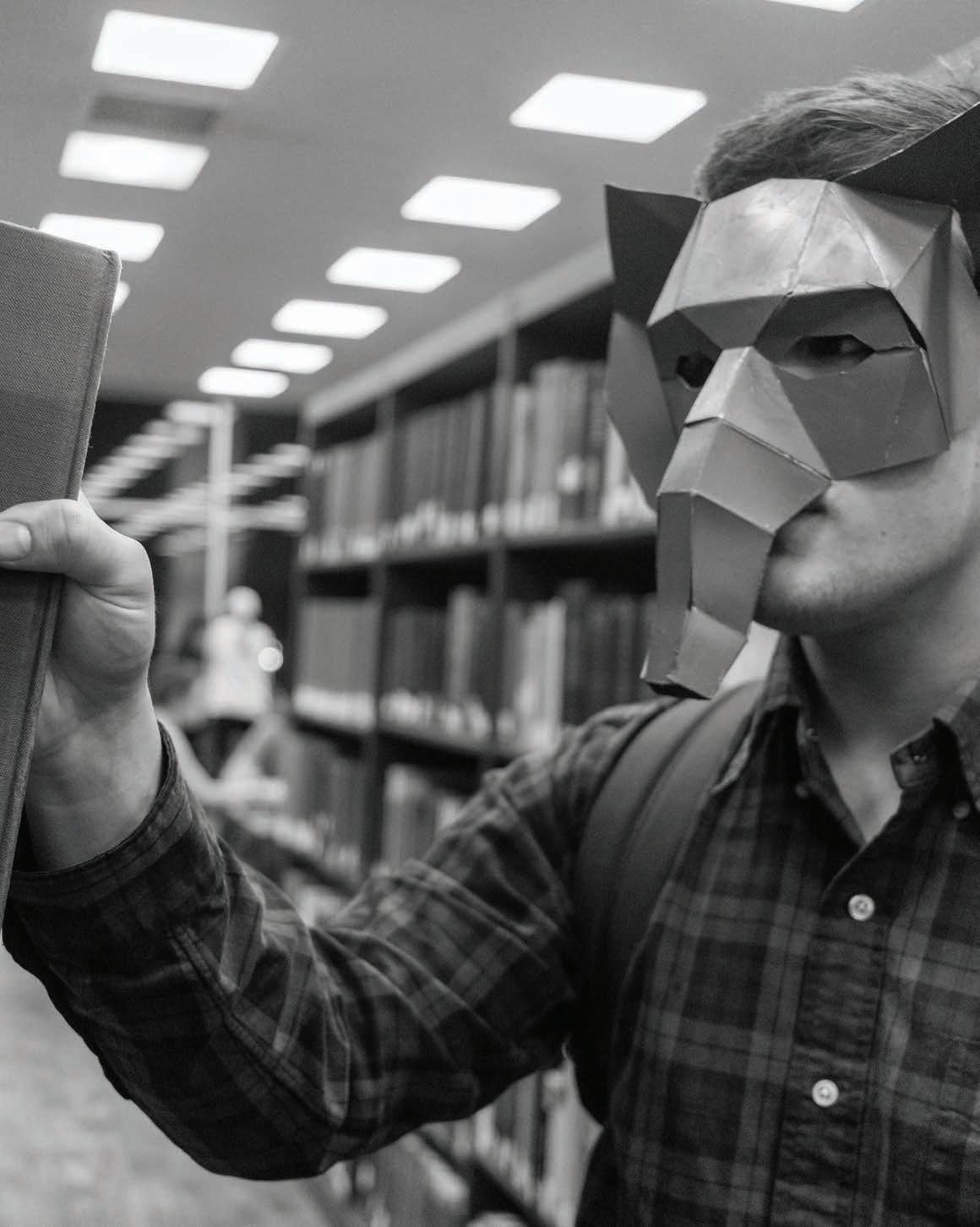
33
Dozens more students harbor similar opinions — not necessarily because of the Honors College itself but the type of students it attracts, who tend toward “narcissism and self-importance.” This echoes an ongoing debate in the field of education: Should gifted and talented children be separated from the larger group for their own betterment or does this lead to low emotional intelligence and weak interpersonal skills?
The c oncept of an Honors College at USC began in the early 1960s, when a select group of faculty scattered across different departments noticed that South Carolina’s most promising students were leaking past our state borders, pursuing degrees at universities like Duke, Vanderbilt and Emory. In order to combat this, an Honors program was started, the eventual goal of which was to not only retain students who were moving out-of-state, but attract highachieving students from other parts of the country.
“From the beginning, [the professors] knew they were doing something remarkable,” Dean Steve Lynn said. “I was part of the small original program, which was just a few classes and a very small group of students at the time. But the faculty in charge kept asking for more funding, more structure and, surprisingly, they kept getting what they asked for.”
Fast forward to 2018, and the South Carolina Honor College retains the ranking of the No. 1 public honors college in the country. Its students regularly win national fellowships, its living-and-learning community centered on an exclusive dorm has garnered attention from higher education programs nationwide, and the student-teacher classroom ratio has stayed steady at about 15:1, even in an era when more students are attending college than ever before.
But even as the Honors College expands its reach — another wing of the dorm is set to begin construction sometime in 2018 — in some sense, this has driven the divide between the Honors College and the rest of USC.
“ The only time I interacted with Honors College students at orientation was at the

Koger Center; at the end of the meeting, certain orientation leaders put up signs saying ‘Honors College students, this way.’ They all stood up and left as we sat there like, ‘Haha, guess we’re stupider than them.’” This is Eugene Suydam, a sophomore economics major who transferred into the Honors College last year.
Suydam knew tha t he wanted to transfer into the Honors College from his first day on campus. You pretty much have to know — otherwise, your Carolina Core requirements will have to be repeated within the Honors College.
I walked into my first advising appointment freshman year and said, ‘Hey, I know I want to transfer, so please don’t let me take unnecessary classes. I want to graduate in four years.’” Suydam also focused his attention on keeping his GPA high and involving himself on campus. He joined student government and Garnet Circle (a networking organization based in the Alumni Association) and stepped out of his comfort zone by trying groups like OverReactors Improv.
“As long as they see that you’re engaged with the community, that you can make connections with your professors and value the intellectual development that’s encouraged in the Honors College, it’s fairly easy to transfer in from regular USC. Much easier than getting in out of high school,” Suydam said.
Another option for non-Honors students looking to take advantage of the programs offered is to engage with the professors directly. Many professors teaching Honors classes will accept non-Honors students into their classes, provided that they express their academic integrity, their interest in the subject matter and their willingness to go the extra mile.
“My professor freshman year had students write a letter on why they wanted to take the class if the class wasn’t full,” said Casey, an experimental psychology major in the Honors College. “Honestly, it worked out for the best — some non-Honors students end up way more driven than Honors College students because they have to work harder to make connections with
professors and make the grades.”
Every organization on campus has the risks and benefits of being misrepresented by its members. And though there is a screening process — the holistic and nebulous procedure of applying to college — in the end, the members of the Honors College can only be vetted so much.
“I think the most important trait we look for in Honors students is intellectual curiosity,” Dean Lynn said. “That doesn’t mean that non-Honors students can’t get a fantastic education at USC, or that they’ll be any less successful.”
So before you get frustrated with motormouth Honors students — or, Honors students, before you isolate yourself from the rest of USC — take a minute to consider another perspective. Reach out, extend your arms, and move away from the part of the elephant you’ve been feeling. Who knows? You might find something totally new.
34
LIKE THE ELEPHANT APPROACHED BY SIX BLIND MEN, THE HONORS
COLLEGE FEELS DIFFERENT IN THE HANDS OF EACH STUDENT.”

35
“

CHANGING WINDS
In order to conquer stressors in college — friends, family, financial needs, academics — we must learn to let go. We must learn to notice when too much stress stems from one source, and leave behind what we cannot carry with us. This can be very difficult, but in time it will bring about peace and well-being. The idea of wind and movement was essential to this style shoot. The only way to move forward in life is to leave certain things in the past — to let your worries and stress blow away in the wind.
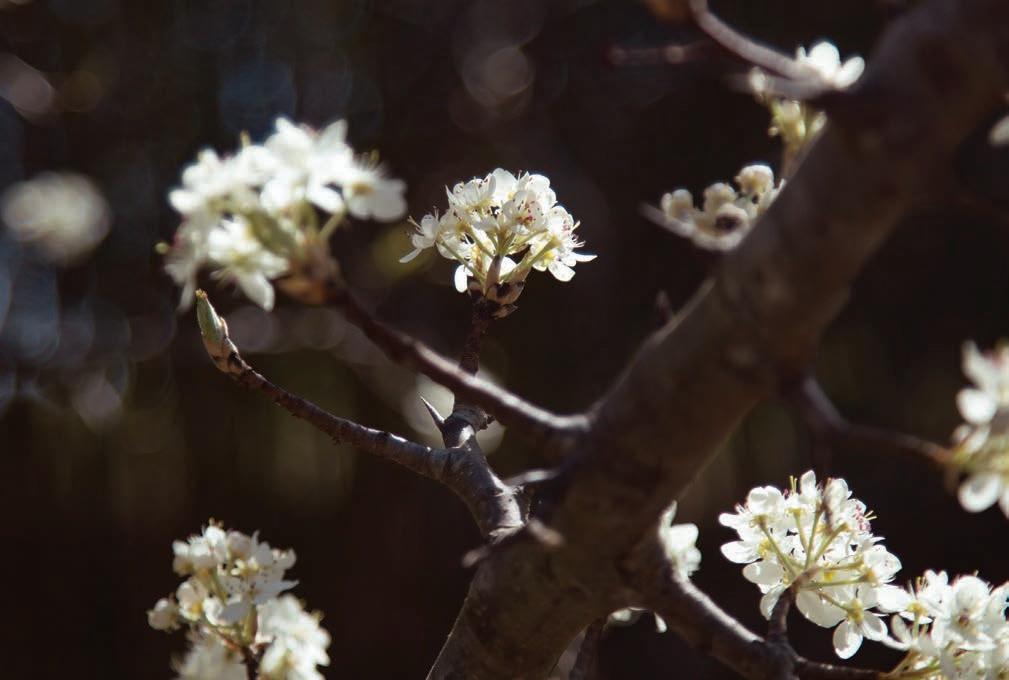
STYLE 37
STYLED BY CLARA MARZOLF • PHOTOS BY EVAN DELP, OLIVIA GRIFFIN, CHRISTIAN HINTY AND RACHEL JOHNSON
DESIGN BY RACHEL JOHNSON AND ASHLYN MURPHY • STYLE ASSISTANTS: ALEX FINLEY AND CAROLINE HART • MODEL: MARY HANNAH HART
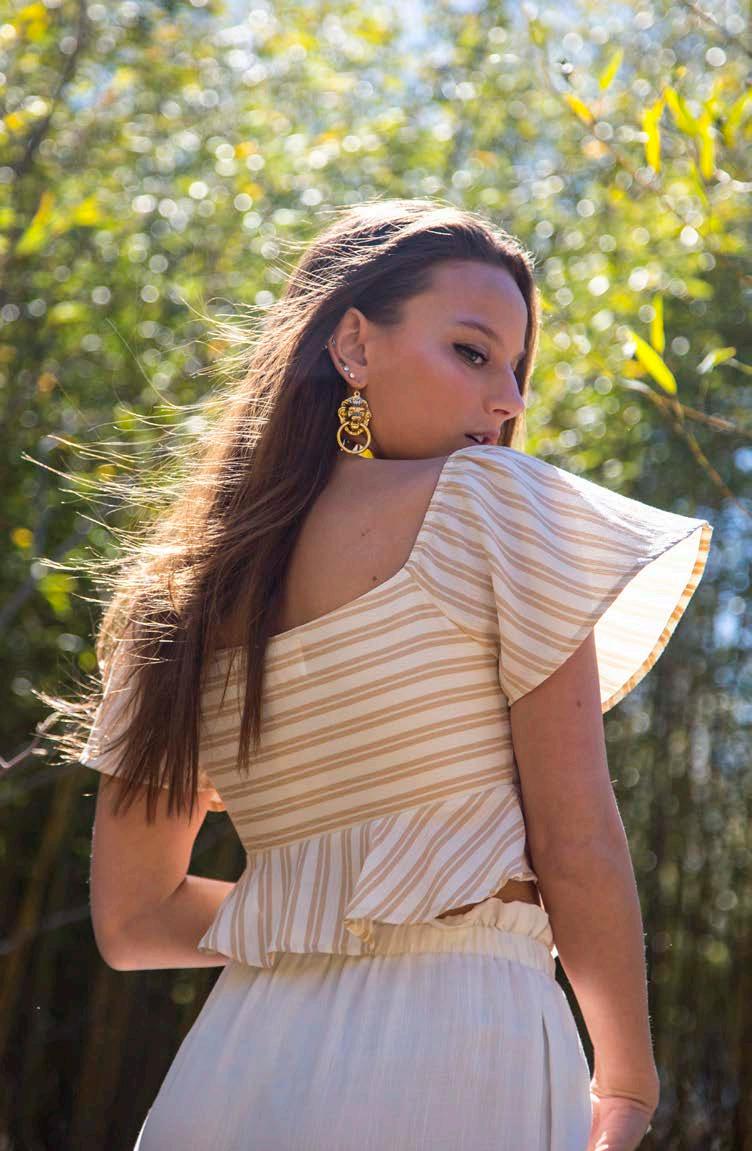



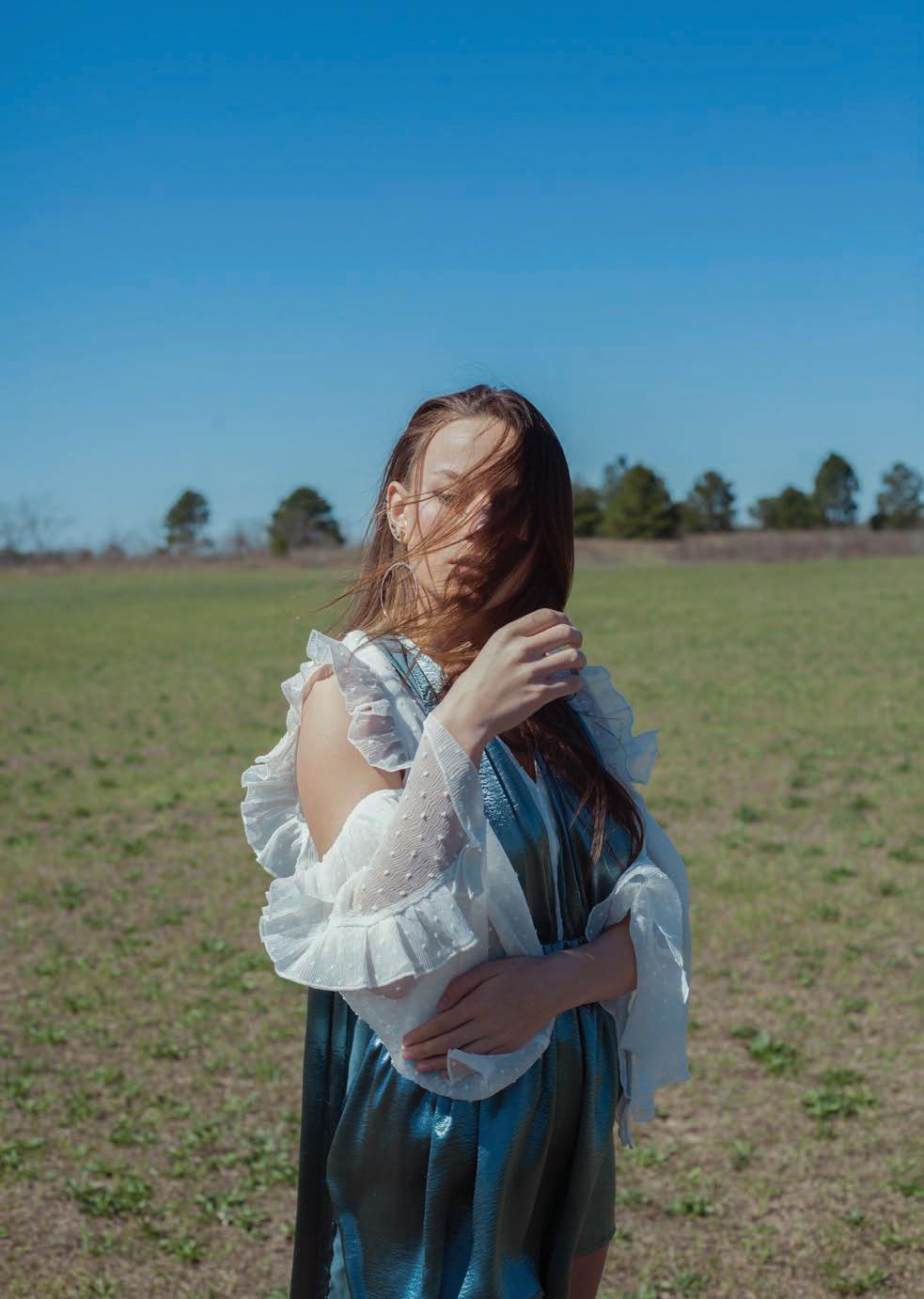



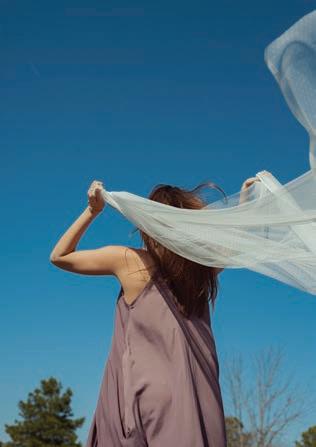
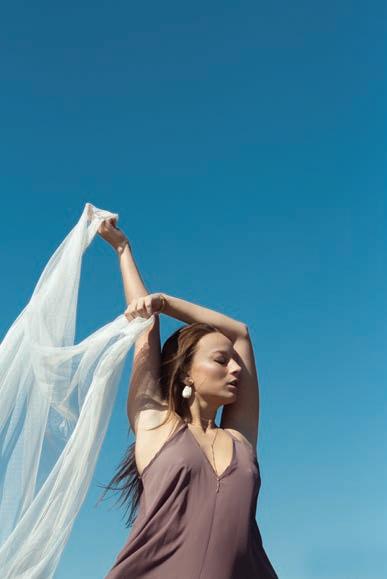

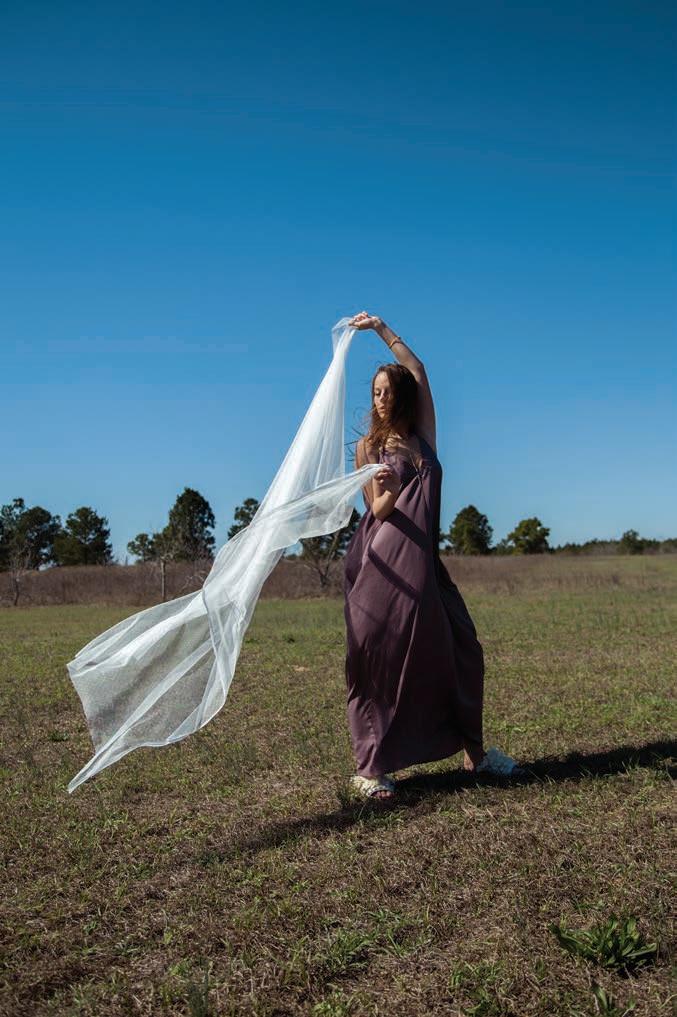 LOOK 1 Lucky in Love Romper, Vestique, $48 | Head Wrap, Sheer White Fabric, Hobby Lobby, $4.99/yard | Butterscotch Conti, Krewe, Bohemian, $255 | Cathedral Chain Choker, VSA, Copper Penny, $178
LOOK 2 Shilla White Pants, Bohemian, $128 | Broken Shaker Crop, Vestique, $40 | Door Knocker Earrings, Vanessa Mooney, Bohemian, $55 | Mars Slide, Free People, Bohemian, $98 | Breaking Free Caged Bag, Vestique, $80 | Stone Ring, Vestique, $12 | Chain Ring, Vestique, $12 | Jane Choker, Jenny Bird, Bohemian, $95
LOOK 3 Ashme Romper, Ever Row, $48 | Pink Stitch Swiss Dot White Top, Bohemian, $158 | Half-Moon Gold Earrings, Fabrik, $18
LOOK 4 Dusty Purple Maxi, Fabrik, $58 | Marquise Drop Y Choker, Vestique, $28 | Hedge Earrings, Sylvia Benson, Copper Penny, $134 | VSA Bracelet, Copper Penny, $245
LOOK 1 Lucky in Love Romper, Vestique, $48 | Head Wrap, Sheer White Fabric, Hobby Lobby, $4.99/yard | Butterscotch Conti, Krewe, Bohemian, $255 | Cathedral Chain Choker, VSA, Copper Penny, $178
LOOK 2 Shilla White Pants, Bohemian, $128 | Broken Shaker Crop, Vestique, $40 | Door Knocker Earrings, Vanessa Mooney, Bohemian, $55 | Mars Slide, Free People, Bohemian, $98 | Breaking Free Caged Bag, Vestique, $80 | Stone Ring, Vestique, $12 | Chain Ring, Vestique, $12 | Jane Choker, Jenny Bird, Bohemian, $95
LOOK 3 Ashme Romper, Ever Row, $48 | Pink Stitch Swiss Dot White Top, Bohemian, $158 | Half-Moon Gold Earrings, Fabrik, $18
LOOK 4 Dusty Purple Maxi, Fabrik, $58 | Marquise Drop Y Choker, Vestique, $28 | Hedge Earrings, Sylvia Benson, Copper Penny, $134 | VSA Bracelet, Copper Penny, $245

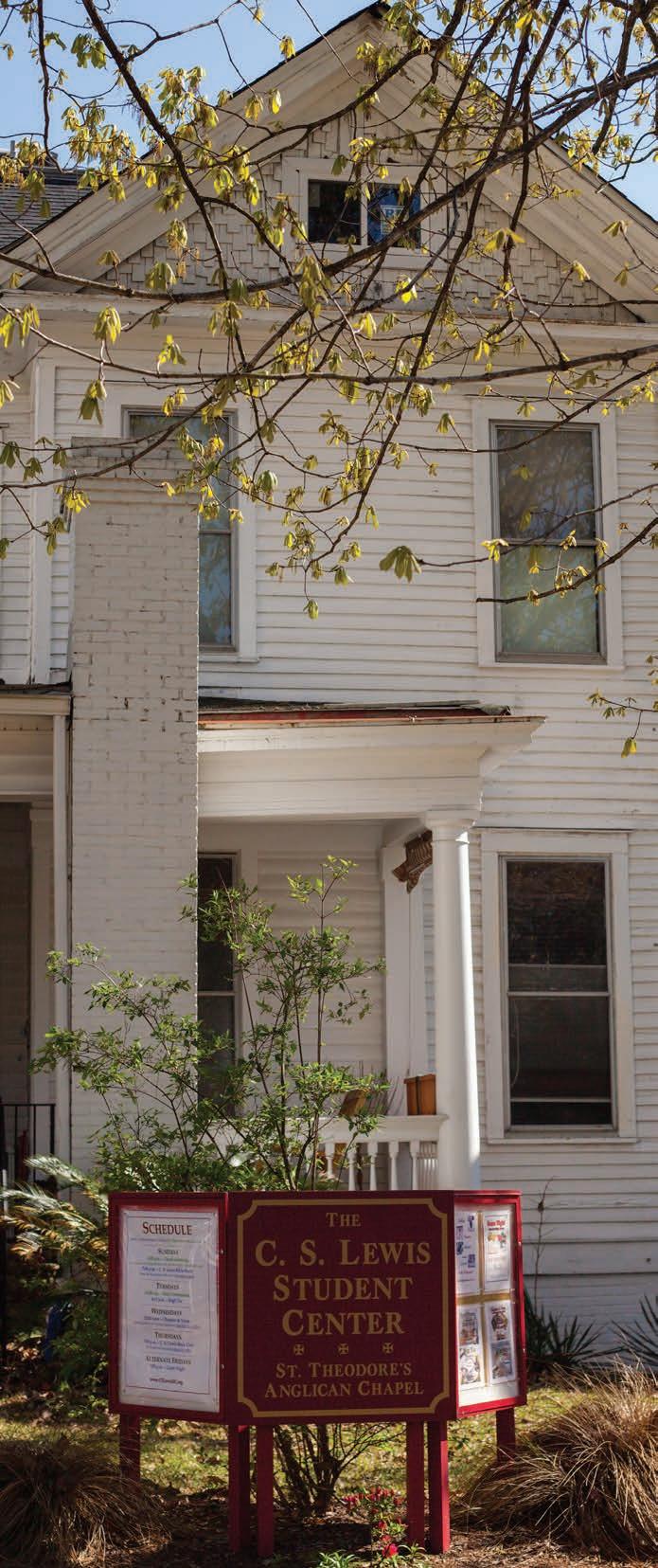

Into the Wardrobe
Removing the cloud around the C.S. Lewis Center.
BY MARY-BRYANT CHARLES • PHOTOS BY BRENNAN BOOKER • DESIGN BY GRACIE NEWTON
A BLONDE STANDS ALONE outside an aging white house. It’s a grey day, with angry wind that sends the foliage littered across the unkempt yard rustling like petticoats across a tile floor. To her left, a paint-chipped porch swing moans from the ends of two rusty chains. To her right, a flowerbed of long-dead bushes that reach out onto the brick path like fingers. She makes her way up an old staircase to the front porch, each wooden step growling like a stray tomcat under her weight. She peels back the screen door and knocks twice, but there’s no answer. She turns the knob and it’s unlocked. She hesitates, then goes inside. It sounds like a bad scene description from an even worse horror movie, but it’s actually just how I decided to spend my Thursday afternoon: with a visit to the C.S. Lewis Center.


There have been questions in my head about the C.S. Lewis Center since I first saw the place on a tour during my senior year of high school. What is it? What do they do in there? Asking a handful of my fellow USC students about the place got me a lot of the same answers, things like “It’s that house on College Street, across from Capstone,” or “It’s a some kind of book club,” or most commonly, “It’s some kind of cult, right?” No one had been to any meetings. There are never any fliers up on campus or representatives on Greene Street. Just that big old monolith of a house.
So what’s their deal?
On Garnet Gate, the C.S. Lewis Center is classified as a religious organization. Sorry, Narnia fans. While the titan on children’s literature found his way into millions of hearts through his books about the world behind the wardrobe, the focus of this particular club is on his theological works, namely his book, Mere Christianity.
In the book, Lewis writes about aspects of Christian doctrine that unite all the major denominations--that Jesus Christ is died and rose again, that there exist certain universal principles of morality and ethics. He says that these are the ideas people of faith should focus
on, the ones that create unity and common ground. The book was also revolutionary in that it calls out the elitism within Christianity, criticizing contemporary theologians and Christian academics for their exclusion of working men in religious discourse.
According to their website, attendees of the center explore these ideas among others presented in other works by Lewis at weekly book club meetings complete with free dessert and coffee. They have board game nights as well. They do service projects with Streetside Ministry, working to help the homeless of Columbia. They have a Facebook group full of active members. There are special services through the Anglican Church also housed in the center. Not a cult—just a tight-knit group comfortable in their own little bubble.
There’s something to be said for a religious community like this. Modern evangelism and the healthy way to go about it has always been a tough question to answer. Individual experiences with the traditional door-to-door/ accost-you-on-Greene-Street-with-doughnutsand-fliers-about-youth-group methods range from really positive to downright intrusive, even with the purest of intentions. It’s nice to know there’s a place that waits for you to arrive on your terms, that isn’t going to seek you out and try to pull you in a direction you may not be comfortable with.
When I went into that aging white house, imagining something straight from a Hitchcock film, what I found was a living room full of old, plush couches arranged in a circle. A small kitchenette, the counter littered with mugs and K-Cups. Connect 4, Risk, Apples to Apples and so much more stacked neatly on a shelf in the corner. Bibles. Prayer requests scribbled on brightly colored sticky notes pasted to a door. A piano. Somewhere to be together. From the outside, it’s easy just to see all the eccentricities, for rumors to bubble up, but clearly for some people it’s those places that makes the best homes.
STUDENT EXPERIENCE 45

JAYLA, 20 The “your body is awesome just the way it is” birth control. The IUD. Now FREE or low-cost. Stop by the USC Center for Health & Well-Being or visit whoopsproofsc.org. Fees for extra services requested or required are not covered by WhoopsProofSC. Valid only for students at participating colleges & universities in South Carolina thru 12/31/2018. Schedule an appointment to review your eligibility.







Supporting the vision of a Healthy Carolina community @UofSCshs Student Health Services is an accredited Patient-Centered Medical Home Student Health Services TAKE CARE.
2018 be a year of taking care of yourself; mind, body & spirit. Stay informed about the ways Student Health Services can help.
sa.sc.edu/shs/takecare
Let
THE DIVIDE
WRITTEN & PHOTOGRAPHED BY LARISSA JOHNSON • DESIGN BY GRACE STEPTOE
At the center of the universe is a North American common house spider. Or at least that’s what the spider figured must be true, because it could remember the instant when space opened up and the universe suddenly appeared, fully formed around it. The lake, the dock, the entire world — and the spider had been chosen to be in the middle of it all.
With such honor came responsibility, the spider had realized. Without a web to coax the sun up, she would hide her light. It had taken days of darkness for the spider to learn, and even still she sometimes rejected the offering. So the spider would begin the next day’s display as soon as the sky began to darken. Today’s had been a contemplation on the patterns in oak leaves. The spider was planning an abstract sculpture of ripping water for tomorrow, a masterful display sure to entice the sun. It needed just the perfect spot. ////
He fumbles to unbutton my shirt and I can smell the alcohol on his fingers, and then on his breath when he leans in. I don’t know if I want him to stop, but the planks of the dock hurt my hands and the gentle swaying conjures images of half-digested spaghetti. I tell him to slow down, not like this, not here, and then he’s standing and then he’s gone.
I lay down own my side, gazing across the darkening water. The rotting planks meet in front of my face and form a canyon, the algae and rust replacing him in my nostrils. Laughs and screams from the cabin are just an echo behind the lapping of water against the shore.
I know they’ll be talking about me soon.
Next to the crevice there’s a tiny spider that he must have crushed when he stood up. It’s not dead, not yet, its tiny legs falling apart but still waving with an almost desperate urgency. I stay there, on my side, watching as the sun disappears across the lake. One leg stops, then another, and the spider finally stops twitching.
I roll onto my back, look up at the cloud-shrouded sky, and hope the morning will never come.

48 FICTION

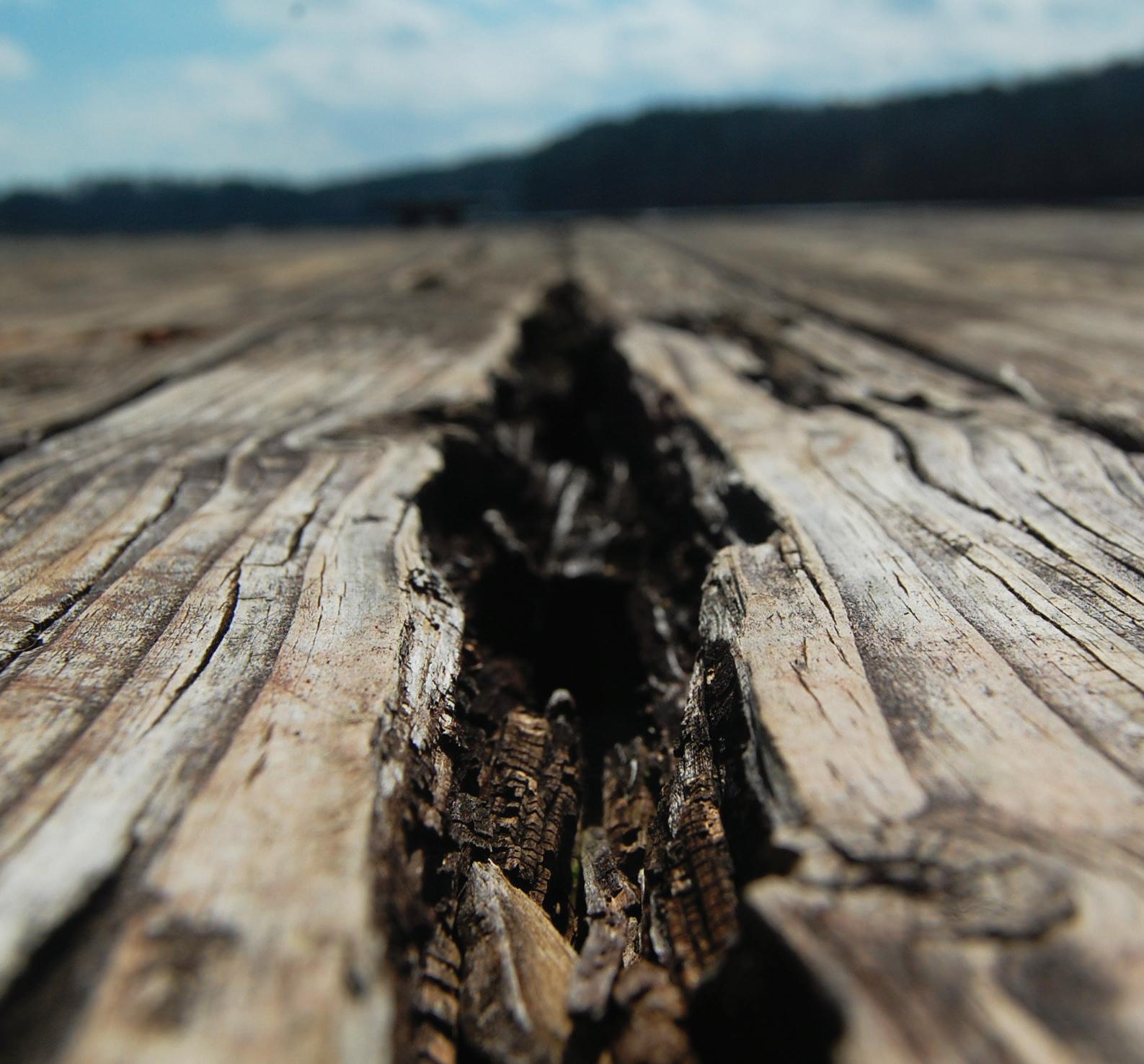
49

50 HOW TO FEDERALLY INSURED BY NCUA. foundersfcu.com • 1-800-845-1614 BULLSTREET OFFICE BullStreet Neighborhood 2166 Boyce Street UNIVERSITY OF SOUTH CAROLINA OFFICE Russell House University Union 1400 Greene Street, Room 227 U KILLIAN ROAD OFFICE 80 Tulip Oak Drive (Next to Applebee’s) FREE CHECKING WITH ESTATEMENTS 1 1 Requires credit evaluation. Teens under the age of 18 are required to have an adult sign as joint owner. Accounts without eStatements will be charged $2 for periodic statements by mail. USC STUDENTS, FACULTY AND STAFF, YOU CAN JOIN! VISIT OUR OFFICE OR RELAXJOINFOUNDERS.COM TO COMPLETE YOUR MEMBERSHIP APPLICATION.

HOW TO 51 Carolina Alert is the Emergency Preparedness resource on campus for students. Download the Rave Guardian App! • Sign up to receive emergency notifications • Learn how to stay safe on campus • Review emergency procedures • Students, sign up to receive text messages and emails at carolinaalert.sc.edu. Follow us on Facebook and Twitter @ CarolinaAlert www.sc.edu/carolinaalert
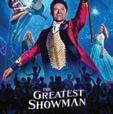





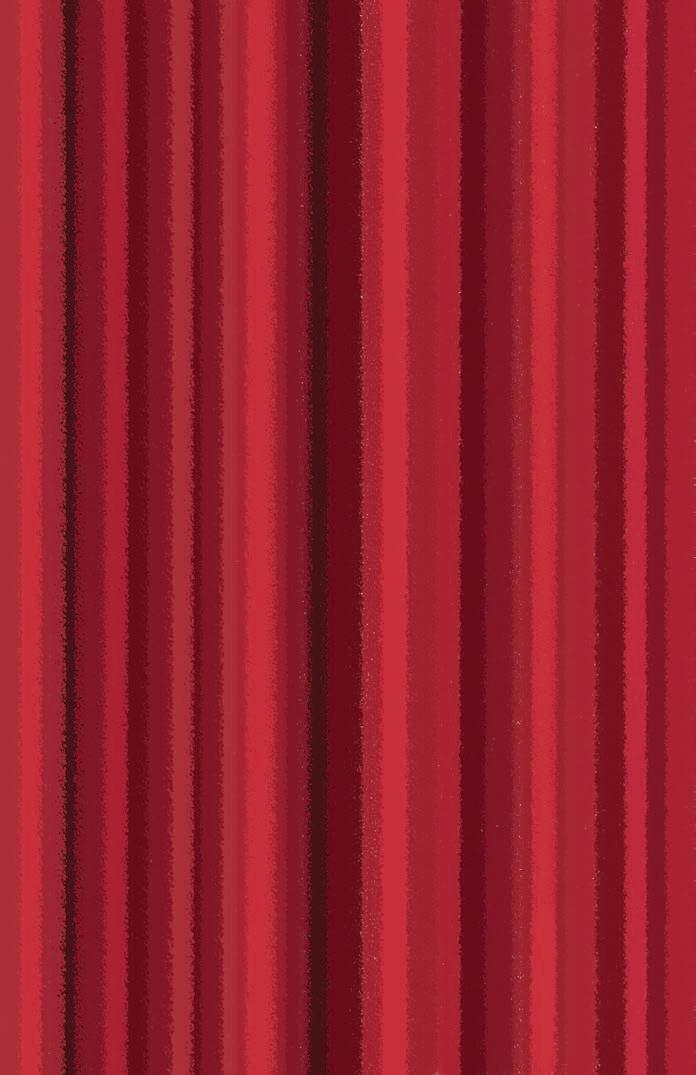
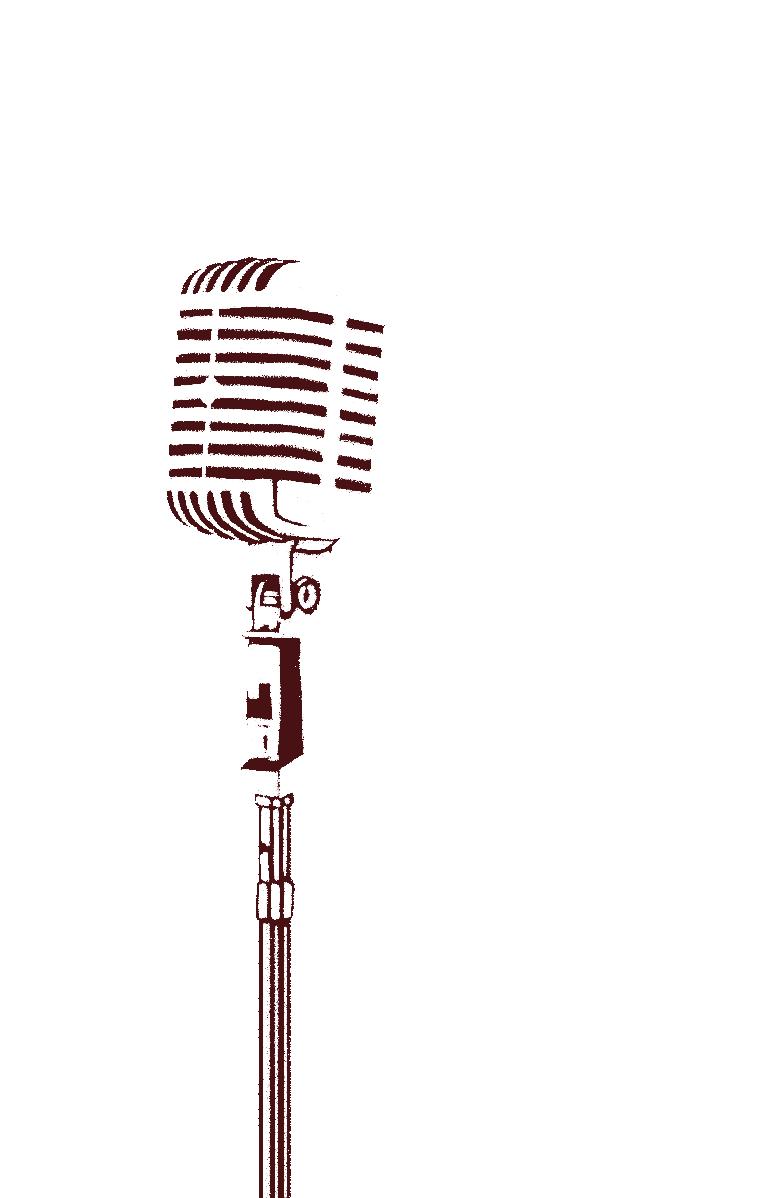

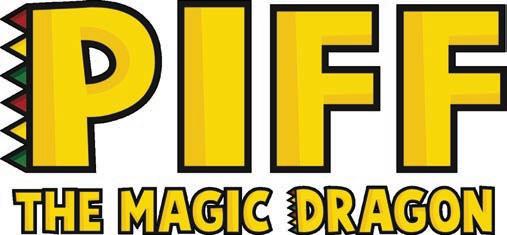
52 HOW TO
LIVING HISTORY
BY ANDREIA WARDLAW • DESIGN BY ASHLYN MURPHY
In an office filled with books and stacks of papers in the Ernest F. Hollings Special Collections Library lies the headquarters of The Center for Civil Rights History and Research. CRC was established in 2015 with the acquisition of the archive of Congressman James E. Clyburn. The Center works with faculty and University librarians to chronicle South Carolina’s important contributions to the Civil Rights Movement. The mission of the center is accomplished through collections of images, videos, and documents, educational lectures from scholars, and firsthand accounts from those who lived and fought in the Movement.
“As part of the center’s mission, we work to analyze and document how current social and political struggles are shaped by a historical context,” Dr. Bobby Donaldson, history professor and director of the Civil Rights Center says. “We also seek to train a young cohort of historians and teachers who will continue to preserve these incredibly important stories from the past.” To do this, the Center offers opportunities for graduate and undergraduate students with a passion for Civil Rights History to gain an intimate understanding of what it takes to collect, record, and curate information for public use. Having staff members at different levels in their academic journeys with diverse passions and interests creates a space where each budding scholar can showcase their unique skills. “I’ve learned so much about Columbia and the power of history by working with the Civil Rights
Center.” Jill Found, PhD student and graduate assistant for the center says, “The Center has helped me to build my personal research skills with a clear purpose - helping other people to understand the complex, and often hidden, history of the Civil Rights Movement in South Carolina.”
One of the highlights of the Civil Rights Center is its access to living history. CRC has been able to bring notable historic figures whose contributions have made large impacts in local and national Civil Rights struggles. Some notable visitors to USC have been Cleveland Sellers, Connie Curry, Judy Richardson and Charles McDew who were all active members in the Student Nonviolent Coordinating Committee.
Encounters with those who experienced history first-hand have truly enhanced the education of the staff members and those attending Civil Rights Center events. Patrice Green, dual public history and library science graduate student and Graduate Assistant Archivist for the Center says “Working with CRC has been more humbling than anything. Every week, I get to meet someone new that helped enable me to do something so simple as walk through the front doors of buildings.” Going forward, the Center continues to build new collections and provide learning opportunities for those who want to know more about a transformative movement in the nation’s history.
To learn more about Civil Rights Center events or how to get involved, visit http://civilrights.sc.edu/.
CAMPUS SPOTLIGHT 53
How the Civil Rights Center preserves history on campus.
LINKEDIN
THE PROFESSIONAL NETWORK
BY RYAN HODGE • PHOTOS BY BRENNAN BOOKER • DESIGN BY RACHEL JOHNSON
LinkedIn. Heard of it? It’s the breath-of-fresh-air social network that isn’t afraid to self-righteously declare just how not a social network it is. This is a professional network.
Yes, yes! Finally, my friends-- no, my Connections! Hark, Connections! Finally, a platform upon which we may do away with the drivel of social media and truly get down to brass tacks (that’s an idiom that professionals use if you were wondering).
No more selfies of your weird aunt here (professional headshots don’t count), or statuses from your awful ex-boyfriend (besides the ones about his every success), or stupid, childish memes (besides stupid, childish political cartoons). We’re grown-ups now.
Take a scroll with me:
In between articles from The Economist, we have a deeply meaningful, personal anecdote shared by an HR professional who plagiarized it from another HR professional. Next up, the inspirational story of the 23-year-old CTO of a startup which delivers food to you that-- get this-- isn’t normally available for delivery! And all this? It’s followed by several blog posts entitled “37 Things I Discovered About Myself While Studying Abroad” written by someone named Sarah or Hannah.
Don’t you get it yet, you blue-collar Facebook user? We’re not talking about plebian Twitter arguments about gun control. We’re talking about professional discourse about gun control with an “AMERICAN BUSINESS PROFESSIONAL 35+ YEARS EXPERIENCE,” or at least that’s what his tagline says.
This is what it looks like when working professionals communicate: incredibly divisive political posts, completely inappropriate advances toward women, and unending advertisements for pyramid scheme door-to-door businesses.
This is a place where everyone can feel safe to proclaim how much of a difference they’re making in the world, as long as they work in recruiting. This is a place where we don’t have to address the ethical quandary of endorsing a stranger for a skill we have no clue if they have.
So go ahead, post your ACT scores for the world to see.
54 RANT
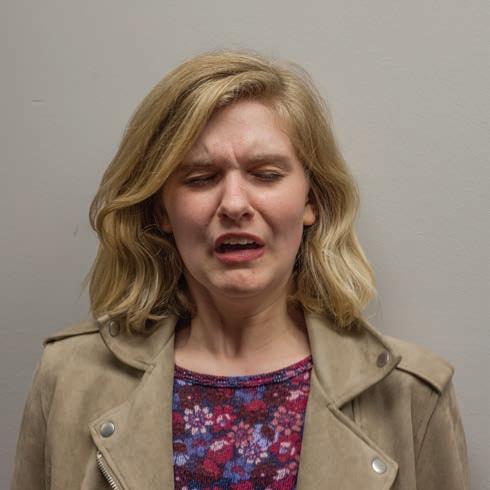
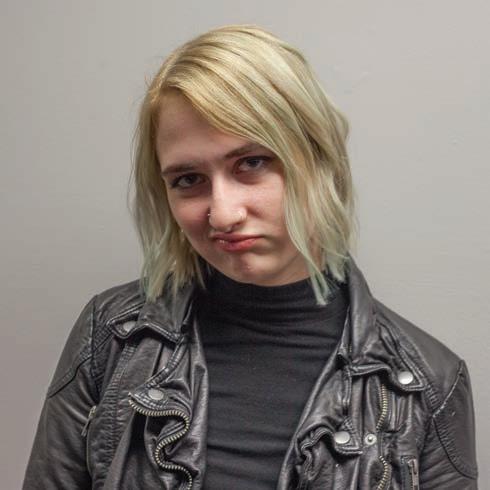


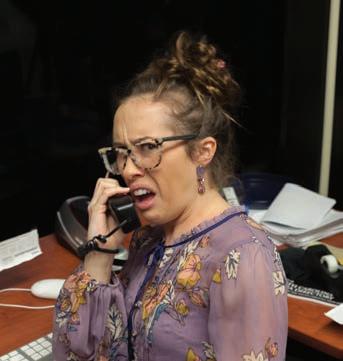
55
Aquatics

Club Sports
Solomon Blatt Physical Education Center
P: 803-576-9375

F: 803-777-5261
campusrec.sc.edu
University of South Carolina Campus Recreation
@UofSC_CampusRec
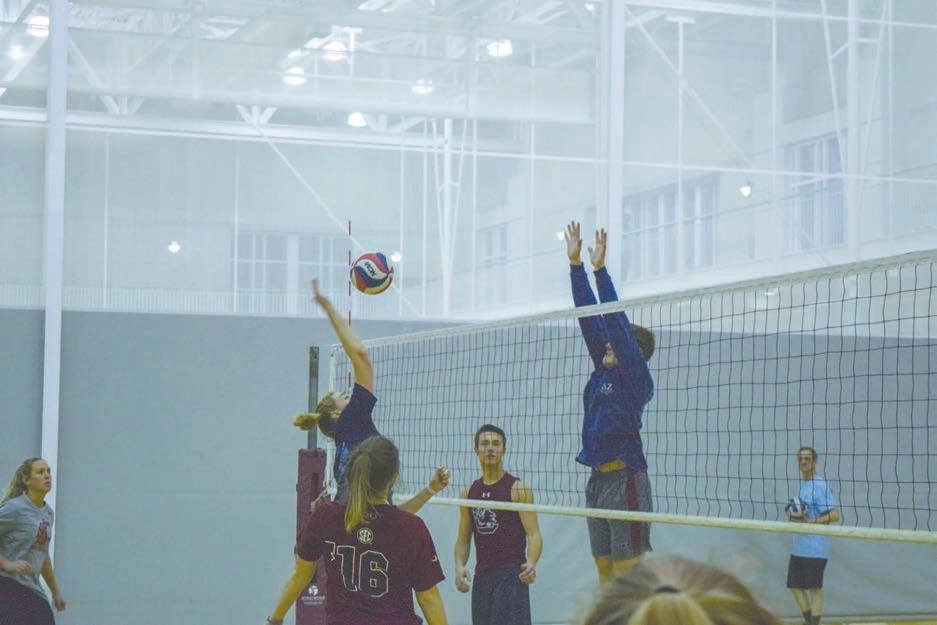
Personal Training


Group Exercise
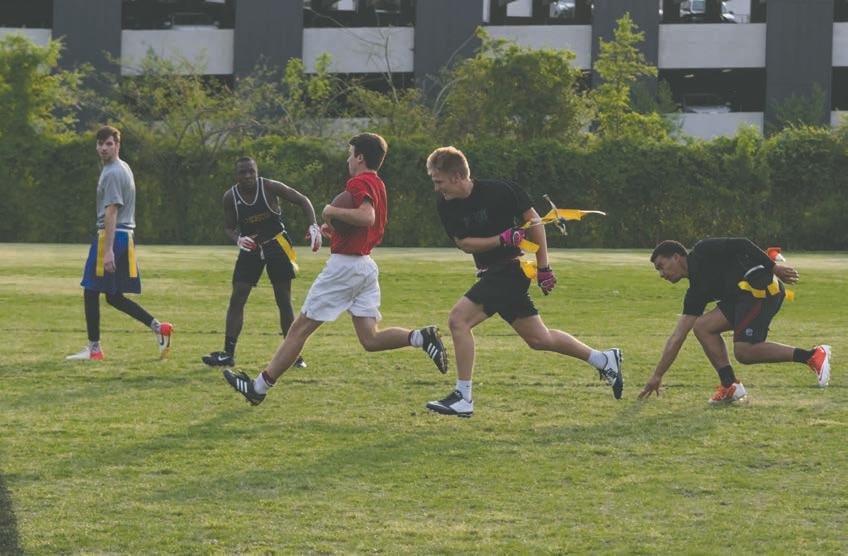
Bike Shop

Outdoor Recreation










































 LOOK 1 Lucky in Love Romper, Vestique, $48 | Head Wrap, Sheer White Fabric, Hobby Lobby, $4.99/yard | Butterscotch Conti, Krewe, Bohemian, $255 | Cathedral Chain Choker, VSA, Copper Penny, $178
LOOK 2 Shilla White Pants, Bohemian, $128 | Broken Shaker Crop, Vestique, $40 | Door Knocker Earrings, Vanessa Mooney, Bohemian, $55 | Mars Slide, Free People, Bohemian, $98 | Breaking Free Caged Bag, Vestique, $80 | Stone Ring, Vestique, $12 | Chain Ring, Vestique, $12 | Jane Choker, Jenny Bird, Bohemian, $95
LOOK 3 Ashme Romper, Ever Row, $48 | Pink Stitch Swiss Dot White Top, Bohemian, $158 | Half-Moon Gold Earrings, Fabrik, $18
LOOK 4 Dusty Purple Maxi, Fabrik, $58 | Marquise Drop Y Choker, Vestique, $28 | Hedge Earrings, Sylvia Benson, Copper Penny, $134 | VSA Bracelet, Copper Penny, $245
LOOK 1 Lucky in Love Romper, Vestique, $48 | Head Wrap, Sheer White Fabric, Hobby Lobby, $4.99/yard | Butterscotch Conti, Krewe, Bohemian, $255 | Cathedral Chain Choker, VSA, Copper Penny, $178
LOOK 2 Shilla White Pants, Bohemian, $128 | Broken Shaker Crop, Vestique, $40 | Door Knocker Earrings, Vanessa Mooney, Bohemian, $55 | Mars Slide, Free People, Bohemian, $98 | Breaking Free Caged Bag, Vestique, $80 | Stone Ring, Vestique, $12 | Chain Ring, Vestique, $12 | Jane Choker, Jenny Bird, Bohemian, $95
LOOK 3 Ashme Romper, Ever Row, $48 | Pink Stitch Swiss Dot White Top, Bohemian, $158 | Half-Moon Gold Earrings, Fabrik, $18
LOOK 4 Dusty Purple Maxi, Fabrik, $58 | Marquise Drop Y Choker, Vestique, $28 | Hedge Earrings, Sylvia Benson, Copper Penny, $134 | VSA Bracelet, Copper Penny, $245







































